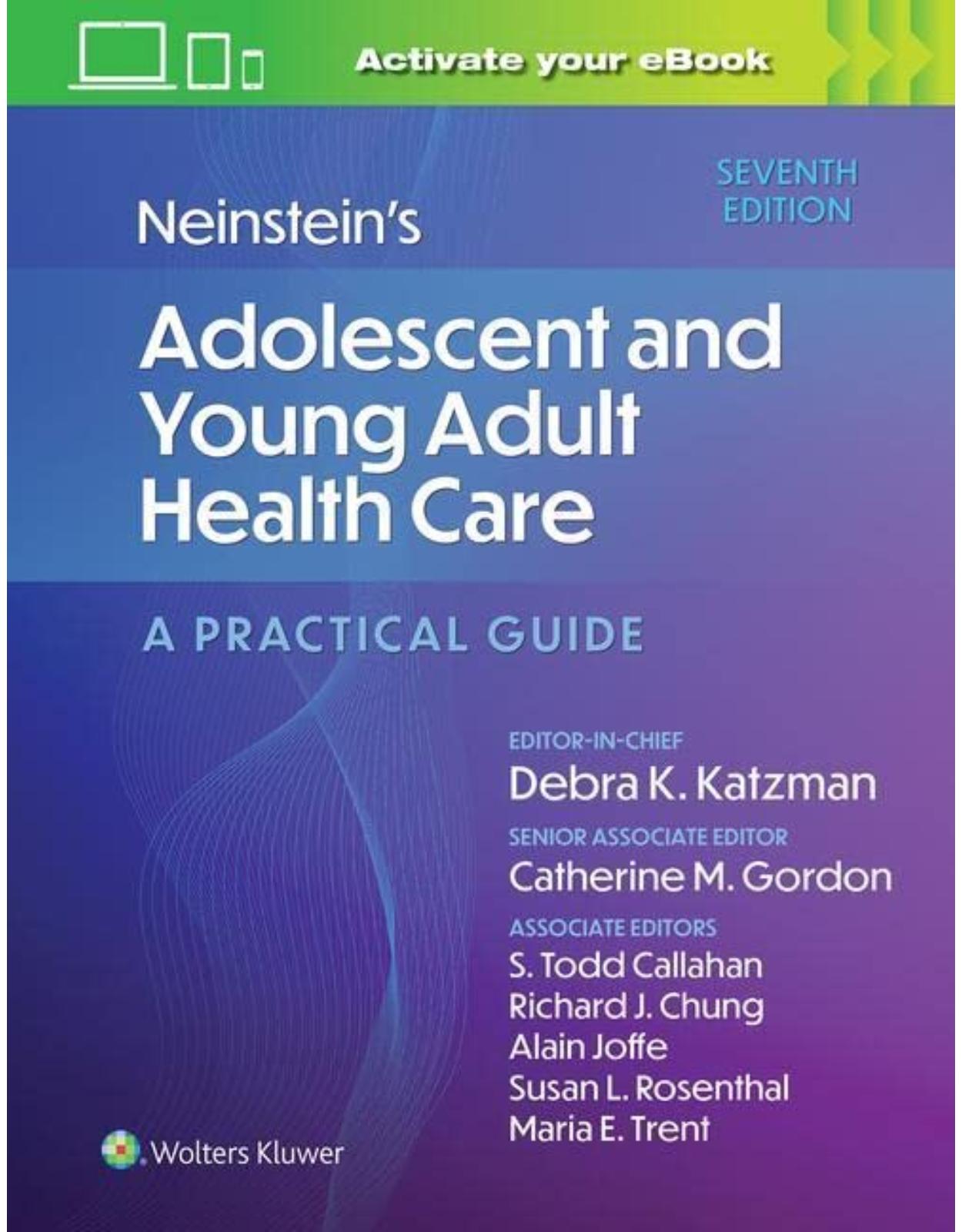
Neinstein's Adolescent and Young Adult Health Care: A Practical Guide
Livrare gratis la comenzi peste 500 RON. Pentru celelalte comenzi livrarea este 20 RON.
Disponibilitate: La comanda in aproximativ 4 saptamani
Editura: LWW
Limba: Engleza
Nr. pagini: 816
Coperta: Hardcover
Dimensiuni:
An aparitie: 25 Mar. 2023
Description:
The #1 choice for more than 35 years for those involved in the care of adolescents and young adults, Neinstein’s Adolescent and Young Adult Health: A Practical Guide, 7th Edition is your go-to resource for practical, authoritative guidance. The fully updated seventh edition, edited by Drs. Debra K. Katzman, Catherine M. Gordon, S. Todd Callahan, Richard J. Chung, Alain Joffe, Susan L. Rosenthal, and Maria E. Trent, offers a comprehensive view of the interdisciplinary nature of the field and is inclusive of the wide variety of health professionals who care for adolescents and young adults. This award-winning text features a full-color design, several new chapters, numerous algorithms, bulleted text throughout for quick reference at the point of care, and fresh perspectives from new editors—making it ideal for daily practice or certification examination preparation.
Table of Contents:
Part I: General Considerations in Adolescent and Young Adult Health
CHAPTER 1 Health of the World’s Adolescents and Young Adults
INTRODUCTION
SOCIAL DETERMINANTS
Structural Determinants of Health
Proximal Social Factors
LIFE-COURSE PERSPECTIVE
Life-Course Transitions in Adolescence and Young Adulthood
Health Correlates of Transitions to Adulthood
DEMOGRAPHICS OF ADOLESCENTS AND YOUNG ADULTS
Global Overview
Population Structure and Composition
MORTALITY IN ADOLESCENTS AND YOUNG ADULTS
Global Mortality
Mortality in the United States and Other High-Income Countries
MORBIDITY
Overview of Global Morbidity
Morbidity in the United States and Other High-Income Countries
Mental Health
Health Behaviors
HEALTH CARE UTILIZATION
Global Overview
Defining and Improving the Quality of Adolescents and Young Adult Health and Health Promotion Services
DATA SOURCES
SUMMARY: HEALTH OF THE WORLD’S ADOLESCENTS AND YOUNG ADULTS
CHAPTER 2 Normal Physical Growth and Development
INTRODUCTION
ENDOCRINE AXES AFFECTING PUBERTAL MATURATION
Hypothalamic–Pituitary–Gonadal Axis
Hypothalamic–Pituitary–Adrenal Axis
MATURATION OF THE HYPOTHALAMIC–PITUITARY–GONADAL AXIS
Gonadal Steroids
The Origins of Puberty: The Gonadotropin-Releasing Hormone Pulse Generator and the Influences of Genetics
PHYSICAL MANIFESTATIONS OF PUBERTY
Sexual Maturity Rating Scales
Female Pubertal Changes
Menarche
Male Pubertal Changes
ADRENARCHE
Physical Manifestations
THE GROWTH HORMONE AXIS AND PUBERTAL GROWTH
Growth Hormone Axis
PHYSICAL GROWTH DURING PUBERTY
Growth Hormone during Puberty
Height Velocity
Prediction of Final Height
Weight Growth
Pubertal Changes in Body Composition and Skeletal Mass
Lean Body Mass
Skeletal Mass
Body Mass Index
Brain Maturation during Adolescence
CONCERNS ABOUT GROWTH AND DEVELOPMENT
SUMMARY
CHAPTER 3 Psychosocial Development in Normal Adolescents and Young Adults
INTRODUCTION
THE PROCESS OF ADOLESCENCE
Phases and Tasks of Adolescence
EARLY ADOLESCENCE (APPROXIMATE AGES 10 TO 13)
Cognitive Development
Movement toward Independence
Body Image
Peer Group
Identity Development
MIDDLE ADOLESCENCE (APPROXIMATE AGES 14 TO 16)
Cognitive Development
Moving toward Independence
Body Image
Peer Group
Identity Development
LATE ADOLESCENCE (APPROXIMATE AGES 17 TO 21)
Cognitive Development
Moving toward Independence
Body Image
Peer Group
Identity Development
YOUNG OR “EMERGING” ADULTS (APPROXIMATE AGES 18 to 25)
Cognitive Development
Moving toward Independence
Body Image
Peer Group and Identity Development
SUMMARY
CHAPTER 4 Office Visit, Interview Techniques, and Recommendations to Parents
INTRODUCTION
GENERAL GUIDELINES FOR THE OFFICE VISIT
Comfort with Adolescents and Young Adults
Meeting the Adolescent and Family: Initial Visit
Office Setup
Interview Structure
PRINCIPLES TO APPROACHING THE ADOLESCENT AND YOUNG ADULT PATIENT
Welcoming, Nonjudgmental Approach
Avoid a Surrogate Parent Role
Avoid a Peer Role
Sidestep Power Struggles
Act as an Advocate
Active Listening
Instill Responsibility
Nonverbal Cues
Behavioral Context
Hidden Agenda
Developmental Orientation
Special Interview Challenges
Family Considerations and Social Determinants of Health
Internal Considerations
Optimize Adolescent and Young Adult–Clinicians Communication
RECOMMENDATIONS TO PARENTS OF ADOLESCENTS
Authoritative Parenting Style
General Suggestions
Challenges of Adolescence
Challenges of Young Adulthood
Establishing House Rules
Health Care Transitions
Telehealth
SUMMARY
ACKNOWLEDGMENT
CHAPTER 5 Preventive Health Care for Adolescents and Young Adults
INTRODUCTION
PREVENTIVE SERVICES FOR ADOLESCENTS AND YOUNG ADULTS
Clinical Guidelines for Preventive Services
Preventive Services and Insurance Coverage in the United States
Barriers to Providing Preventive Services
Improving Preventive Services Delivery
DIGITAL HEALTH
The Electronic Health Record and Preventive Services
Challenges Related to Confidential Care
Extending the Preventive Reach of the Clinician Through Technology
THE PREVENTIVE SERVICES VISIT
Setting the Stage for Preventive Care
Questionnaires and Screening Tools
History
Measurements
Physical Examination
Chest
Screening Tests
IMMUNIZATIONS
Recommended Vaccines
Catch-Up Vaccines
Consent for Vaccination
Improving Vaccine Delivery
PREVENTIVE HEALTH COUNSELING
Approaches to Preventive Health Counseling
HEALTH CARE TRANSITIONS
SUMMARY
ACKNOWLEDGMENTS
CHAPTER 6 Nutrition
INTRODUCTION
POTENTIAL NUTRITIONAL PROBLEMS
Risk Factors
NUTRITIONAL ASSESSMENT
Dietary Data
Clinical Signs of Nutritional Deficiencies
Anthropometric Measurements
Laboratory Tests
Nutritional Requirements
GUIDELINES FOR NUTRITIONAL THERAPY
General Recommendations
Special Conditions
SUMMARY
CHAPTER 7 Understanding Legal and Ethical Aspects of Care
INTRODUCTION
LEGAL FRAMEWORK
Constitutional Rights
State and Federal Laws
CONSENT
The Mature Minor Doctrine and Informed Consent
Right to Refuse Treatment
Minors in State Custody and Consent
Young Adults and Capacity to Consent
PRIVACY AND CONFIDENTIALITY
Confidentiality Protections for Adolescent Minors
The Health Insurance Portability and Accountability Act Privacy Rule
Electronic Health Information, the Health Insurance Portability and Accountability Act Security Rule, and the 21st Century Cures Act
PAYMENT
SPECIALIZED MECHANISMS AND SETTINGS FOR ADOLESCENT AND YOUNG ADULT CARE
Providing Care through Telehealth
Providing Health Care in School Settings
ETHICAL PRINCIPLES AND ETHICAL CHALLENGES
SUMMARY
DISCLAIMER
CHAPTER 8 Complementary and Integrative Medicine in Adolescents and Young Adults
INTRODUCTION
EDUCATION
RESEARCH
CLINICIAN KNOWLEDGE ABOUT COMPLEMENTARY AND INTEGRATIVE MEDICINE
HERBS/SUPPLEMENTS
Overview and Regulation
Drug Interactions and Toxicity
Dosing Issues and Active Compounds
Long-Term Use
Use in Pregnancy and Lactation
Commonly Used Herbs/Supplements
ST. JOHN’S WORT (HYPERICUM PERFORATUM)
Uses
Mechanism of Action
Clinical Studies
Adverse Effects
Herb–Drug Interactions
VALERIAN ROOT (VALERIANA OFFICIANALIS)
Uses
Mechanism of Action
Clinical Studies
Adverse Effects
Herb–Drug Interactions
CHAMOMILE (MATRICARIA CHAMOMILLA)
Uses
Mechanism of Action
Clinical Studies
Adverse Effects
Herb–Drug Interactions
ELDERBERRY (SAMBUCUS)
Uses
Mechanism of Action
Clinical Studies
Adverse Effects
Herb–Drug Interactions
ECHINACEA (E. ANGUSTIFOLIA, E. PALLIDA, E. PURPUREA)
Uses
Mechanism of Action
Clinical Studies
Adverse Effects
Herb–Drug Interactions
FEVERFEW (TANACETUM PARTHENIUM)
Uses
Mechanism of Action
Clinical Studies
Adverse Effects
Herb–Drug Interactions
BUTTERBUR (PETASITES HYBRIDUS)
Uses
Mechanism of Action
Clinical Studies
Adverse Effects
Herb–Drug Interactions
MELATONIN
Uses
Mechanism of Action
Clinical Studies
Adverse Effects
Herb–Drug Interactions
INOSITOL
Uses
Mechanism of Action
Clinical Studies
Adverse Effects
Herb–Drug Interactions
ACUPUNCTURE
Mechanism of Action
Uses
Clinical Studies
Adverse Effects
YOGA
Mechanism of Action
Uses
Clinical Studies
Adverse Effects
BIOFEEDBACK
Mechanism of Action
Uses
Clinical Studies
Adverse Effects
HYPNOSIS
Mechanism of Action
Uses
Clinical Studies
Adverse Effects
MANUAL THERAPIES: CHIROPRACTIC, OSTEOPATHIC MANIPULATION, AND MASSAGE
Mechanism of Action
Uses
Clinical Studies
Adverse Effects
MASSAGE
Mechanism of Action
Uses
Clinical Studies
Adverse Effects
MINDFULNESS
Mechanism of Action
Uses
Clinical Studies
Adverse Effects
SUMMARY
CHAPTER 9 Technology and Social Media
INTRODUCTION
SOCIAL MEDIA AND TECHNOLOGY USE RATES
SOCIAL MEDIA
What Is Social Media?
How Social Media Sites Are Used
Influence of Social Media
Benefits of Social Media and Other Digital Technologies
Risks of Social Media
VIDEO GAMES AND ONLINE GAMING
TELEHEALTH
ELECTRONIC HEALTH RECORDS
APPS
ROLE OF THE ADOLESCENT AND YOUNG ADULT CLINICIAN REGARDING DIGITAL TECHNOLOGY USE
Prevention
Education
Screening
Intervention
SUMMARY
CHAPTER 10 Chronic Health Conditions in Adolescents and Young Adults
INTRODUCTION
HOW ARE CHRONIC HEALTH CONDITIONS DEFINED?
HOW PREVALENT ARE CHRONIC HEALTH CONDITIONS?
INTERACTION OF ADOLESCENT DEVELOPMENT AND CHRONIC HEALTH CONDITIONS
THE SOCIAL CONTEXT OF HEALTH-RELATED BEHAVIORS AND STATES
QUALITY HEALTH SERVICES
THE ELEMENTS OF QUALITY HEALTH CARE FOR ADOLESCENTS AND YOUNG ADULTS WITH CHRONIC HEALTH CONDITIONS
Adherence with Treatment
Sexual and Reproductive Health Care
Transition to Adult Health Care
SUMMARY
CHAPTER 11 Palliative Care and End of Life in Adolescents and Young Adults
INTRODUCTION
DEFINITIONS
PSYCHOSOCIAL NEEDS OF ADOLESCENTS AND YOUNG ADULTS WITH LIFE-LIMITING CONDITIONS
Psychological Needs
Social Needs
Spiritual and Cultural Needs
Needs of Close Others
Needs of Clinicians
INTRODUCTION OF PALLIATIVE CARE TO ADOLESCENTS AND YOUNG ADULTS
How, When, Where, and by Whom
Service Provision and Resources
SYMPTOM MANAGEMENT
DECISION MAKING AND ADVANCE CARE PLANNING
Assessing Readiness
Tools
Conflict in Decision Making
TRANSITION TO THE ADULT HEALTH CARE SYSTEM
END-OF-LIFE CARE
BEREAVEMENT
SUMMARY
CHAPTER 12 Quality Improvement Concepts in Adolescent and Young Adult Health
INTRODUCTION
Quality in Health Care
CLINICAL IMPORTANCE OF QUALITY IMPROVEMENT
QUALITY IMPROVEMENT METHODS IN PRACTICE: IDENTIFYING AND PRIORITIZING QUALITY PROBLEMS
INSTITUTE FOR HEALTH CARE IMPROVEMENT MODEL FOR IMPROVEMENT
What Are We Trying to Accomplish?
How Will We Know That a Change Is an Improvement?
What Changes Can Result in Improvement?
STAKEHOLDER PARTICIPATION
Understanding Your Quality Improvement Problem Using Quality Improvement Tools
PLAN-DO-STUDY-ACT CYCLE
DISPLAYING DATA
KEY DIFFERENCES BETWEEN RESEARCH AND QUALITY IMPROVEMENT
QUALITY IMPROVEMENT IN ADOLESCENT AND YOUNG ADULT HEALTH
SUMMARY
CHAPTER 13 Research with and about Adolescents and Young Adults
INTRODUCTION
ETHICS AND OVERSIGHT
Privacy and Safety for the Adolescent Study Participant
Balancing Privacy and Safety
Certificate of Confidentiality
ENGAGEMENT AND REPRESENTATION OF ADOLESCENTS AND YOUNG ADULTS IN RESEARCH
RESEARCH DESIGN AND METHODS
Data Collection and Analysis
METHODOLOGIC ISSUES FOR RESEARCH WITH ADOLESCENTS AND YOUNG ADULTS
SUMMARY
Part II: Endocrine Disorders
CHAPTER 14 Abnormal Growth and Development
INTRODUCTION
SHORT STATURE WITHOUT DELAYED PUBERTY
Definition of Short Stature
Differential Diagnosis
Evaluation
Suggestions for Diagnosis
Treatment of Short Stature with Growth Hormone
DELAYED PUBERTY
Review of Normal Development
Definition and General Guidelines for Evaluating Puberty
Differential Diagnosis
WORKUP OF DELAYED PUBERTY
History
Physical Examination
Laboratory Tests
Clues to Other Diagnoses
MANAGEMENT OF DELAYED PUBERTY
Treatment for Females
Treatment for Boys
Treatment of Specific Conditions
PATIENT EDUCATION
PRECOCIOUS PUBERTY
Definition
Causes
Incomplete Forms of Precocious Puberty
Evaluation of Precocious Puberty
Treatment of Precocious Puberty
SUMMARY
CHAPTER 15 Thyroid Function and Disease in Adolescents and Young Adults
INTRODUCTION
THYROID MIGRATION, GROWTH, AND FUNCTION DURING DEVELOPMENT
FOCUSED MEDICAL HISTORY
PHYSICAL EVALUATION OF THYROID STRUCTURE
LABORATORY EVALUATION OF THYROID FUNCTION
RADIOLOGIC EVALUATION OF THYROID FUNCTION
ROLE OF GENETIC TESTING IN THYROID DISEASE
THYROID DISORDERS
Thyroid Structural Disorders
Functional Thyroid Disorders
PREGNANCY AND THYROID DISORDERS
SUMMARY
CHAPTER 16 Diabetes Mellitus
INTRODUCTION
CLASSIFICATION AND ETIOLOGY
EPIDEMIOLOGY
DIAGNOSIS
SCREENING
PREVENTION
EVALUATION AND TREATMENT
COMPLICATIONS, ASSOCIATED CONDITIONS, AND FOLLOW-UP CARE
SPECIAL CONSIDERATIONS FOR PATIENT-CENTERED CARE WITH ADOLESCENTS AND YOUNG ADULTS
TRANSITION TO ADULT CARE
SUMMARY
Part III: Cardiovascular and Pulmonary Disorders
CHAPTER 17 Cardiovascular Health and Cholesterol Disorders
INTRODUCTION
CARDIOVASCULAR HEALTH
ATHEROSCLEROSIS
LIPID PHYSIOLOGY AND LIPID DISORDERS
CARDIOVASCULAR RISK SCREENING
TREATMENT OF LIPID DISORDERS
Pharmacologic Agents
SUMMARY
CHAPTER 18 Syncope, Vertigo, and Sudden Cardiac Arrest
INTRODUCTION
SYNCOPE
Etiology
Classification
History and Physical Examination
Neurocardiogenic Syncope
Cardiovascular Syncope
Noncardiovascular Syncope
VERTIGO
History
Physical Examination
SUDDEN CARDIAC ARREST IN ADOLESCENTS AND YOUNG ADULTS
Etiologies of Sudden Unexpected Cardiac Death in Adolescents and Young Adults
SUMMARY
CHAPTER 19 Heart Murmurs, Congenital Heart Disease, and Acquired Heart Disease
INTRODUCTION
HISTORY
PHYSICAL EXAMINATION
DIAGNOSTIC CLUES SUGGESTIVE OF INNOCENT (NORMAL) MURMURS
TYPES OF INNOCENT (NORMAL) MURMURS
Still’s Murmur
Pulmonary Flow Murmur
Cervical Venous Hum
Supraclavicular (Carotid) Bruit
DIAGNOSTIC CLUES SUGGESTIVE OF PATHOLOGIC MURMURS
MURMURS ASSOCIATED WITH STRUCTURAL HEART DISEASE
Atrial Septal Defect
Ventricular Septal Defect
Patent Ductus Arteriosus
Valvular Pulmonary Stenosis
Valvular Aortic Stenosis
Hypertrophic Cardiomyopathy (Fig. 19.1)
Mitral Valve Prolapse
Mitral Valve Regurgitation
SYSTEMIC CONNECTIVE TISSUE DISEASE AND THE HEART
Marfan Syndrome
Ehlers–Danlos Syndromes
Fragile X Syndrome
ACQUIRED INFECTIOUS AND INFLAMMATORY HEART DISEASE
Bacterial Endocarditis: Recognition and Prophylaxis
Inflammatory Heart Disease
GENERAL CONSIDERATIONS IN THE EVALUATION OF HEART LESIONS
CONGENITAL HEART DISEASE IN ADOLESCENTS AND YOUNG ADULTS
Transition to Adult Care for Youth with Congenital Heart Disease
SUMMARY
CHAPTER 20 Systemic Hypertension
INTRODUCTION
DEFINITION OF HYPERTENSION
Elevated BP
Staging
FACTORS THAT INFLUENCE BP
Height and Weight
Age
Sodium and Other Dietary Constituents
Stress and Adverse Childhood Experiences
Race/Ethnicity
Genetics
Birth Weight and Other Perinatal Factors
ETIOLOGY
DIAGNOSIS
Blood Pressure Measurement
Confirmation of Hypertension Diagnosis
Diagnostic Evaluation
THERAPY
Prevention
Nonpharmacologic Interventions
Pharmacologic Treatment—Adolescents ≤18 Years
Pharmacologic Treatment—Young Adults ≥18 Years
Pharmacologic Treatment—Special Populations
HYPERTENSIVE EMERGENCIES
SUMMARY
CHAPTER 21 Pulmonary Problems
INTRODUCTION
ASTHMA
RESPIRATORY DISORDERS TRIGGERED BY EXERCISE
Exercise-Induced Bronchoconstriction
Exercise-Induced Laryngeal Obstruction
HABIT COUGH (TIC COUGH OR SOMATIC COUGH SYNDROME)
PECTUS EXACAVATUM
DISORDERS OF MUCOCILIARY CLEARANCE
Cystic Fibrosis
Primary Ciliary Dyskinesia
E-CIGARETTE OR VAPING PRODUCT USE-ASSOCIATED LUNG INJURY
SUMMARY
Part IV: Musculoskeletal Problems and Sport Medicine
CHAPTER 22 Common Musculoskeletal Problems
INTRODUCTION
GENERAL PRINCIPLES OF MUSCULOSKELETAL INJURY CARE
Elements of Musculoskeletal History
Elements of Musculoskeletal Physical Examination
General Indications for Imaging in Musculoskeletal Evaluations
General Indications for Referral to a Musculoskeletal Specialist for Patients with Acute Trauma of an Extremity
General Concepts in Treatment and Rehabilitation of Injuries
GROWTH PLATE DISORDERS
THE ANKLE
History of Ankle Symptoms
Physical Examination of the Ankle
Imaging of the Ankle
Treatment of the Ankle
Ankle Sprain
Ankle Fractures
THE KNEE
History of Knee Symptoms
Physical Examination of the Knee
Imaging of the Knee
Treatment of the Knee
Patellofemoral Pain
Osgood–Schlatter Disease
Osteochondritis Dissecans
THE HIP
History of Hip Symptoms
Physical Examination of the Hip
Imaging of the Hip
Treatment of the Hip
Femoroacetabular Impingement and Labral Tears
Slipped Capital Femoral Epiphysis
THE SHOULDER
History of Shoulder Symptoms
Physical Examination of the Shoulder
Imaging of the Shoulder
Treatment of the Shoulder
Acute Shoulder Injuries
Chronic Shoulder Injuries
THE SPINE
History of Spine Symptoms
Physical Examination of the Spine
Imaging of the Spine
Treatment of the Spine
Spondylolysis/Spondylolisthesis
Discogenic Back Pain
Nonspecific Low Back Pain
Scoliosis
Scheuermann Kyphosis
STRESS FRACTURES
Definition/Etiology
Epidemiology
Clinical Manifestations
Diagnosis
Treatment
Prognosis
THE CORE
SUMMARY
ACKNOWLEDGMENT
CHAPTER 23 Guidelines for Promoting Physical Activity and Sports Participation
INTRODUCTION
PHYSICAL ACTIVITY AND SPORTS
EPIDEMIOLOGY OF PHYSICAL ACTIVITY AND SPORTS PARTICIPATION
RECOMMENDATIONS FOR PHYSICAL ACTIVITY
Resistance Training and Flexibility
Additional Types of Activity
CLINICIANS’ ROLES IN PROMOTING PHYSICAL ACTIVITY
Benefits of Physical Activity
Barriers and Predictors of Participation
How to Promote Safe Activity
Practical Guidance for Clinicians
WRITING AN EXERCISE PRESCRIPTION
Establishing a Baseline of Physical Activity
Motivational Interviewing
Creating an Action Plan for Physical Activity
Reaching Physical Activity Goals
Evaluating Physical Activity Goals
PREPARTICIPATION PHYSICAL EVALUATION
Goals and Context of the Preparticipation Physical Evaluation
The Preparticipation Physical Evaluation History
The Preparticipation Physical Evaluation Physical Examination
Diagnostic Tests and Laboratory Evaluation
Determining Medical Eligibility for Physical Activity
Medical–Legal Issues in Exclusion from Sports Participation
Effectiveness of the Preparticipation Physical Evaluation
COMMON CONSIDERATIONS IN PHYSICAL ACTIVITY EVALUATION
Eating Disorders and Energy Deficiency
Cardiovascular Considerations in Exercise
Micronutrients, Supplements, and Fluids
Mental Health Considerations
Sport-Related Concussion
Attention Deficit Hyperactivity Disorder
Mononucleosis
Blood-Borne Pathogens and Sports Participation
Coronavirus Disease 2019 (COVID-19)
PROMOTING PHYSICAL ACTIVITY IN ALL POPULATIONS
Female Athlete
Transgender/Nonbinary Athletes
Athletes with a Disability and Special Health Care Needs
Physical Activity during Pregnancy
INJURY PREVENTION
Sports Injury Epidemiology
Sports Specialization
Burnout
Overuse Injuries
Anterior Cruciate Ligament Injury Prevention
Equipment
Guidelines and Rules
Athletic Organizations and Facilities
SUMMARY
ACKNOWLEDGMENT
CHAPTER 24 Concussion
INTRODUCTION
DEFINITION
PATHOPHYSIOLOGY
EPIDEMIOLOGY
DIAGNOSIS
On-Field Assessment
Sideline Assessment
Clinic Assessment
Advanced Diagnostics
MANAGEMENT
Return-to-Play
Return to Academics
Pharmacologic Therapy
Targeted Therapies
COMPLICATIONS AND CHRONIC EFFECTS
Second-Impact Syndrome
Mental Health and Wellness
Chronic Traumatic Encephalopathy
Disqualification and Retirement from Sport
PREVENTION
SUMMARY
Part V: Skin Disorders
CHAPTER 25 Acne
INTRODUCTION
ETIOLOGY
CLINICAL MANIFESTATIONS
Acne Lesions
Acne Variants
EVALUATION
DIFFERENTIAL DIAGNOSIS
MANAGEMENT
Patient Education
Topical Medications
Oral Medications
TREATMENT FOLLOW-UP
SUMMARY
CHAPTER 26 Miscellaneous Skin Conditions
INTRODUCTION
DERMATITIS
Atopic Dermatitis
Allergic Contact Dermatitis
Seborrheic Dermatitis
FUNGAL INFECTIONS
Tinea Versicolor
Tinea Pedis (Athlete’s Foot)
Onychomycosis
Tinea Cruris
VIRAL INFECTIONS
Warts
BACTERIAL INFECTIONS
Crusted (Nonbullous) Impetigo
Bullous Impetigo
Folliculitis
PAPULOSQUAMOUS DISEASES
Pityriasis Rosea
Psoriasis
HYPERSENSITIVITY REACTIONS
Urticaria
Erythema Multiforme
Erythema Nodosum
Drug Eruptions
OTHER CONDITIONS
Hair Loss
Acanthosis Nigricans
Hidradenitis Suppurativa
Hyperhidrosis
Sun Exposure
Vitiligo
Body Modifications
SUMMARY
Part VI: Neurologic and Sleep Disorders
CHAPTER 27 Epilepsy
INTRODUCTION
DEFINITIONS
EPIDEMIOLOGY
THE INTERNATIONAL LEAGUE AGAINST EPILEPSY CLASSIFICATIONS
ETIOLOGY
DIFFERENTIAL DIAGNOSIS FOR PAROXYSMAL EVENTS
DIAGNOSTIC EVALUATION
MANAGEMENT OF EPILEPSY
Medications
Surgical Options
Dietary Therapy
CONSIDERATIONS FOR FEMALES WITH EPILEPSY
Contraception
Pregnancy
Breastfeeding
Polycystic Ovarian Syndrome
Bone Health
Catamenial Epilepsy
EPILEPSY COMORBIDITIES
LIVING WITH EPILEPSY
Seizure Precautions
Sudden Unexpected Death in Epilepsy
Seizure Action Plan
Employment
SUMMARY
CHAPTER 28 Headaches
INTRODUCTION
EPIDEMIOLOGY
HEADACHE CLASSIFICATION AND TYPES
COMMON PRIMARY HEADACHES
Migraine
Tension-Type Headache
Cluster Headache
New Daily Persistent Headache
COMMON SECONDARY HEADACHES
Posttraumatic Headache
Headaches Related to Substances, Including Medications
Idiopathic Intracranial Hypertension
Headache Related to Cerebral Venous Sinus Thrombosis
HEADACHE CLINIC VISIT AND EVALUATION
HEADACHE TREATMENT
The Multitiered Approach
SUMMARY
CHAPTER 29 Sleep Disorders
INTRODUCTION
SLEEP PHYSIOLOGY
Rapid Eye Movement Sleep
Nonrapid Eye Movement Sleep
SLEEP PATTERN AND CHANGES DURING ADOLESCENCE AND YOUNG ADULTHOOD
COMMON SLEEP DISTURBANCES AND DISORDERS
Sleep Deprivation and Excessive Daytime Sleepiness Due to Insufficient Sleep
Insomnia
Delayed Sleep Phase
Sleep-Disordered Breathing/Obstructive Sleep Apnea
Narcolepsy
Parasomnias
PREVENTION, IDENTIFICATION, AND TREATMENT
Prevention and Screening
History Taking, Sleep Diary, and Physical Examination
Referral for Further Assessment
Treatment
Sleep Disorder Clinics
SUMMARY
Part VII: Genitourinary Disorders
CHAPTER 30 Renal and Genitourinary Tract Infections in Adolescents and Young Adults
INTRODUCTION
UNCOMPLICATED INFECTIONS
Cystitis
ASYMPTOMATIC BACTERIURIA
COMPLICATED INFECTIONS
Pyelonephritis
Epididymitis/Prostatitis
TREATMENT OF UNCOMPLICATED AND COMPLICATED URINARY TRACT INFECTIONS
THE FUTURE OF PREVENTION AND TREATMENT OF URINARY TRACT INFECTIONS
SUMMARY
CHAPTER 31 Enuresis in Adolescents and Young Adults
INTRODUCTION
DEFINITIONS
ETIOLOGY
Genetics
Central Nervous System Abnormalities
Nocturnal Polyuria
Bladder Dysfunction
PSYCHOSOCIAL BURDEN
DIAGNOSIS AND EVALUATION OF ENURESIS IN ADOLESCENTS AND YOUNG ADULTS
TREATMENT
Lifestyle Changes
Specific Treatments
Medications
Neuromodulation
SUMMARY
CHAPTER 32 Asymptomatic Proteinuria and Hematuria
INTRODUCTION
ASYMPTOMATIC PROTEINURIA
Pathophysiology
Epidemiology
Causes of Asymptomatic Proteinuria
Diagnostic Approach
Prognosis
HEMATURIA
Epidemiology
Pathophysiology
Differential Diagnosis
Diagnostic Approach
Specific Conditions Presenting with Gross or Microscopic Hematuria in Adolescents and Young Adults
SUMMARY
ACKNOWLEDGMENT
Part VIII: Infectious Diseases
CHAPTER 33 Infectious Mononucleosis
INTRODUCTION
Etiology and Pathophysiology
Epidemiology
Laboratory Evaluation
Differential Diagnosis
Diagnosis
Epstein–Barr Virus–Associated Conditions
SUMMARY
CHAPTER 34 Infectious Respiratory Illnesses
INTRODUCTION
MYCOPLASMA AND COMMUNITY-ACQUIRED PNEUMONIA
Etiology and Pathophysiology
Epidemiology
Clinical Manifestations
Complications
Laboratory Evaluation
Differential Diagnosis
Diagnosis
Management
PERTUSSIS
Etiology
Epidemiology
Clinical Manifestations
Laboratory Evaluation
Differential Diagnosis
Diagnosis
Management
Control Measures
Immunization
INFLUENZA
Etiology
Epidemiology
Clinical Manifestations
Complications
Laboratory Evaluation
Differential Diagnosis
Diagnosis
Management
Immunization
CORONAVIRUS DISEASE 2019 (COVID-19)
Etiology and Pathophysiology
Clinical Manifestations
Complications
Differential Diagnosis
Diagnosis
Management
Immunization
SUMMARY
CHAPTER 35 Viral Hepatitis
INTRODUCTION
HEPATITIS A
Epidemiology
Clinical Course
Viral Antigens and Antibodies
Treatment
Prevention and Prophylaxis
Considerations in Pregnancy
HEPATITIS B
Epidemiology
Clinical Course
Viral Antigens and Antibodies
Treatment
Prevention and Prophylaxis
Considerations in Pregnancy
HEPATITIS C
Epidemiology
Clinical Course
Viral Antigens and Antibodies
Treatment
Prevention and Prophylaxis
Considerations in Pregnancy
HEPATITIS D
Epidemiology
Clinical Course
Viral Antigens and Antibodies
Treatment
Prevention and Prophylaxis
Considerations in Pregnancy
HEPATITIS E
Epidemiology
Clinical Course
Viral Antigens and Antibodies
Treatment
Prevention and Prophylaxis
Considerations in Pregnancy
SUMMARY
ACKNOWLEDGMENTS
CHAPTER 36 Human Immunodeficiency Virus Infections and Acquired Immunodeficiency Syndrome
INTRODUCTION
ETIOLOGY, PATHOGENESIS, AND NATURAL HISTORY
EPIDEMIOLOGY
Prevalence
Incidence
Age
Ethnicity
Gender
Global Epidemiology
TRANSMISSION
Transmission Routes
Injection Drug Use
Sex
Vertical Transmission
HUMAN IMMUNODEFICIENCY VIRUS TESTING AND COUNSELING
Consent and Confidentiality
To Whom Should Human Immunodeficiency Virus Testing Be Offered?
Who Should Have Human Immunodeficiency Virus Testing Deferred?
Youth-Specific Testing
Human Immunodeficiency Virus Tests
Pretest Counseling
Posttest Counseling
HUMAN IMMUNODEFICIENCY VIRUS PREVENTION
Primary Biomedical Prevention
Secondary Biomedical Prevention
Behavioral Prevention
MANAGEMENT OF HUMAN IMMUNODEFICIENCY VIRUS INFECTION IN ADOLESCENTS AND YOUNG ADULTS
Initial Assessment
Vaccinations
Follow-Up
Manifestations of Human Immunodeficiency Virus Infection
Management of Sexually Transmitted Infections
Management of Family Planning
Sports Participation
Evaluation of Specific Syndromes
Prophylaxis
Antiretroviral Therapy
SUMMARY
Recommendations for Clinicians
ACKNOWLEDGMENT
Part IX: Conditions Affecting Nutrition and Weight
CHAPTER 37 Obesity
INTRODUCTION
DEFINITION OF OBESITY IN ADOLESCENTS AND YOUNG ADULTS
EPIDEMIOLOGY OF OBESITY IN ADOLESCENTS AND YOUNG ADULTS
PATHOGENESIS OF OBESITY
Environmental and Behavioral Risk Factors
Genetic Risk Factors
Hormonal Abnormalities
Medications
HEALTH EFFECTS AND MEDICAL EVALUATION OF OBESITY
TREATMENT OF ADOLESCENTS AND YOUNG ADULTS WITH OBESITY
Avoiding Bias in the Treatment of Obesity
Prevention of Obesity in Adolescents and Young Adults
Treatment in the Primary Care Setting
TERTIARY INTERVENTIONS WHEN LIFESTYLE AND DIETARY COUNSELING FAIL
Comprehensive Weight Management Programs
Medications
Bariatric Surgery
SUMMARY
CHAPTER 38 Feeding and Eating Disorders
INTRODUCTION
ANOREXIA NERVOSA
Etiology
Epidemiology
Risk Factors6
Clinical Manifestations
Laboratory Features
Medical Complications
Diagnosis and Differential Diagnosis
Evaluation
Nutritional Assessment
Treatment
Outcome
ATYPICAL ANOREXIA NERVOSA
BULIMIA NERVOSA
Epidemiology
Risk Factors
Clinical Manifestations
Medical Complications
Diagnosis and Differential Diagnosis
Evaluation
Treatment
Outcome
BINGE-EATING DISORDER
AVOIDANT RESTRICTIVE FOOD INTAKE DISORDER
Epidemiology
Clinical Presentation
Medical Complications
Evaluation
Treatment
MALES AND EATING DISORDERS
Epidemiology
Clinical Presentation
Medical Management
RELATIVE ENERGY DEFICIENCY IN SPORT
Risk Factors
Physical Signs
Treatment
SUMMARY
Part X: Functional and Unexplained Medical Conditions
CHAPTER 39 Chronic Noninflammatory Musculoskeletal Pain Disorders
INTRODUCTION
PSYCHIATRIC DIAGNOSES WITH SIGNIFICANT SOMATIC MANIFESTATIONS
Adjustment Disorder
Physical Symptoms Associated with Psychological Distress
Somatic Symptom and Related Disorders
SYNDROMES OF CHRONIC MUSCULOSKELETAL PAIN
Terminology
Clinical Presentations
Epidemiology
Pathophysiology
Differential Diagnosis
MANAGEMENT
OTHER PRIMARY PAIN SYNDROMES
CHRONIC FATIGUE SYNDROME
SUMMARY
CHAPTER 40 Fatigue and Myalgic Encephalomyelitis/Chronic Fatigue Syndrome
INTRODUCTION
CAUSES OF FATIGUE
MYALGIC ENCEPHALOMYELITIS/CHRONIC FATIGUE SYNDROME
Definition
Epidemiology
Symptoms
Etiology
Orthostatic Intolerance
Allergic Inflammation
Mental Health
EVALUATION OF MYALGIC ENCEPHALOMYELITIS/CHRONIC FATIGUE SYNDROME
History
Physical Examination
Laboratory Studies
MANAGEMENT OF MYALGIC ENCEPHALOMYELITIS/CHRONIC FATIGUE SYNDROME
Nonpharmacologic Treatments
Pharmacologic Treatment
SUMMARY
ACKNOWLEDGMENTS
CHAPTER 41 Chronic Abdominal Pain
INTRODUCTION
DEFINITION
DIFFERENTIAL DIAGNOSIS AND CLINICAL MANIFESTATIONS OF CHRONIC ABDOMINAL PAIN
Functional Gastrointestinal Disorders
Organic and Other Causes of Chronic Abdominal Pain
DIAGNOSIS
History
Physical Examination
Diagnostic Tests
Approach to the Evaluation of Functional Gastrointestinal Disorders
TREATMENT OR THERAPEUTIC APPROACH
Treatment Options for Functional Gastrointestinal Disorders
SUMMARY
Part XI: Sexuality and Contraception
CHAPTER 42 Adolescent and Young Adult Sexuality
INTRODUCTION
CLOSE RELATIONSHIPS IN ADOLESCENCE AND YOUNG ADULTHOOD
Types of Relationships and Meaning
Developmental Benefits in Relationships
SOLO AND PARTNERED SEXUAL BEHAVIOR IN ADOLESCENCE AND YOUNG ADULTHOOD
Sexual “Abstinence”
Solo Masturbation
Partnered Masturbation
Oral Sex
Penile-Vaginal Sex
Penile-Anal Sex
Sexting
OUTCOMES ASSOCIATED WITH SEXUAL BEHAVIOR
CLINICIAN RECOMMENDATIONS
SUMMARY
CHAPTER 43 Sexual Minority Adolescents and Young Adults
INTRODUCTION
Terminology
Prevalence of Sexual Minorities
SEXUAL IDENTITY AND DEVELOPMENT
HOMOPHOBIA AND HETEROSEXISM
MINORITY STRESS, INTERSECTIONALITY, AND THE HEALTH OF SEXUAL MINORITY YOUTH
HEALTH CONCERNS FOR SEXUAL MINORITY YOUTH
Mental Health and Suicidality
Substance Use Disorders
Eating Disorders
Sexual Health: HIV and Other Sexually Transmitted Infections
Reproductive Health
Runaway, Homelessness, and Foster Involvement
Bullying and Victimization
Intimate Partner Violence
SUPPORTING SEXUAL MINORITY YOUTH: COMBATTING STIGMA AND PROMOTING RESILIENCE
CARING FOR SEXUAL MINORITY YOUTH
Creating an Inclusive Clinical Environment and Engaging Sexual Minority Youth in Care
Addressing Mental and Behavioral Health Needs
Addressing Sexual and Reproductive Health Needs
Supporting Parents/Caregivers of Sexual Minority Youth
SUMMARY
ACKNOWLEDGMENT
CHAPTER 44 Transgender Adolescents and Young Adults
INTRODUCTION
TERMINOLOGY
PREVALENCE
ETIOLOGY
COMING OUT PROCESS
EMOTIONAL AND BEHAVIORAL HEALTH
Mood Disorders and Anxiety
Homelessness
Violence
Suicide
HEALTH CONCERNS
Substance Use
Eating Disorders
Obesity
Pregnancy
Sexually Transmitted Infections
MEDICAL INTERVENTION
Hormones
Hormone Therapy Risk
Surgery
Preintervention Assessment
OTHER ISSUES FOR TRANSGENDER ADOLESCENT AND YOUNG ADULTS
Sex-Segregated Facilities
Electronic Records
APPROACH TO THE TRANSGENDER ADOLESCENT AND YOUNG ADULTS AND FAMILY
SUMMARY
ACKNOWLEDGMENTS
CHAPTER 45 Adolescent and Young Adult Pregnancy and Parenting
INTRODUCTION
FACTORS CONTRIBUTING TO ADOLESCENT AND YOUNG ADULT PREGNANCY
REPEAT PREGNANCY
ADOLESCENT PREGNANCY PREVENTION INTERVENTIONS
EVALUATION AND MANAGEMENT OF THE PREGNANT ADOLESCENT AND YOUNG ADULT
Role of the Clinician
Common Presentations of Pregnancy
Pregnancy Tests
Gestational Age
PREGNANCY COUNSELING
TERMINATING THE PREGNANCY
Choice of Medical Versus Surgical Early Abortion Methods
MEDICAL MANAGEMENT OF THE PREGNANT ADOLESCENT
MEDICAL COMPLICATIONS OF PREGNANCY
Adoption
OTHER CONSEQUENCES OF ADOLESCENT PREGNANCY
Child Outcomes
Growth and Development
Education and Socioeconomic Issues
Subsequent Childbirth
MALE ADOLESCENTS AND YOUNG ADULTS AS FATHERS
CARE OF YOUNG PARENTS AND THEIR CHILDREN
Family-Centered Care for the Mother and Newborn
SUMMARY
ACKNOWLEDGMENT
CHAPTER 46 Contraception
INTRODUCTION
Sexual Activity and Contraceptive Usage
CONTRACEPTIVE METHODS
LONG-ACTING REVERSIBLE CONTRACEPTIVE METHODS
Intrauterine Devices
Advantages
Current Availability in the United States
Implants (Etonogestrel Implant or Nexplanon)
Advantages
Current Availability in the United States
INJECTABLES (DEPOT MEDROXYPROGESTERONE ACETATE: DEPO-PROVERA OR DMPA)
Current Use
Advantages
Availability in the United States
COMBINATION METHODS: COMBINATION ORAL CONTRACEPTIVE PILLS, CONTRACEPTIVE PATCH, AND CONTRACEPTIVE RING
Combination Oral Contraceptive Pills
Contraceptive Ring and Patch
Progestin-Only Pills
STARTING CONTRACEPTION
HELPING AN ADOLESCENT OR YOUNG ADULT WOMAN SELECT THE CONTRACEPTIVE METHOD THAT IS RIGHT FOR HER
SPECIAL ISSUES IN PROVIDING CONTRACEPTION TO ADOLESCENTS AND YOUNG ADULTS WITH CHRONIC MEDICAL CONDITIONS
Psychiatric Disease and Intellectual Disabilities
EMERGENCY CONTRACEPTION
Use of Emergency Contraception by Adolescents and Young Adults
Advance Prescription and Access
Relative Effectiveness
COPPER INTRAUTERINE DEVICE FOR EMERGENCY CONTRACEPTION (PARAGARD)
Mechanism of Action
Advantages
Side Effects
LEVONORGESTREL INTRAUTERINE DEVICE FOR EMERGENCY CONTRACEPTION (MIRENA AND LILETTA)
Mechanism of Action
Advantages
Side Effects
ULIPRISTAL ACETATE OR ULIPRISTAL ACETATE (ELLA) FOR EMERGENCY CONTRACEPTION
Mechanism of Action
Advantages
Side Effects
LEVONORGESTREL PILLS FOR EMERGENCY CONTRACEPTION
Types
Availability
Cost
Specific Advantages
Mechanism of Action
Side Effects
Emergency Contraception and Weight
Repeated Use
Ethical Considerations Around Mechanism of Action
SUMMARY
CHAPTER 47 Barrier Contraceptives and Spermicides
INTRODUCTION
EXTERNAL CONDOMS
Condoms for Sexually Transmitted Infection Prevention
Uses of External Condoms
Types of External Condoms
Mechanism of Action
Effectiveness
Improving Condom Success
Advantages
Disadvantages
Side Effects of External Condoms
Future Developments
INTERNAL CONDOMS
Efficacy
Advantages
Disadvantages
Future Developments
CONTRACEPTIVE SPONGE
Mechanism of Action
Efficacy
Patient Education
Contraindications
Advantages
Disadvantages
Future Developments
CERVICAL SHIELD
Efficacy
Insertion of Lea’s Shield
Removal of Lea’s Shield
Advantages
Disadvantages
CERVICAL CAP AND DIAPHRAGM
Effectiveness
Contraindications to Use
Tips to Improve Success of Method
Correct Fitting of Diaphragm
Patient Education
Insertion and Removal of Diaphragm
Advantages
Disadvantages
Future Developments
VAGINAL SPERMICIDES
Types of Spermicides
Efficacy
Mechanism of Action
Contraindications
Advantages
Disadvantages
Future Developments
SUMMARY
CHAPTER 48 Contraceptive Pills, Patches, Rings, and Injections
INTRODUCTION
CLINICAL PRACTICES TO ENHANCE CONTRACEPTIVE SUCCESS
OVERVIEW OF HORMONAL METHODS OF CONTRACEPTION
Mechanisms of Action of Sex Steroids
ORAL CONTRACEPTIVES
Progestin-Only Pills
Combined Oral Contraceptives
VAGINAL CONTRACEPTIVE RINGS
TRANSDERMAL CONTRACEPTIVE PATCHES
NONCONTRACEPTIVE BENEFITS OF COMBINED HORMONAL CONTRACEPTIVES
Menstrually Related Benefits
Nonmenstrually Related Benefits
RISKS POSED BY COMBINED HORMONAL CONTRACEPTION
Increased Risk of Thromboembolism
Breast Cancer: Temporarily Increased Risk
Increased Risk of Cervical Cancer and Dysplasia
SIDE EFFECTS WITH COMBINED HORMONAL CONTRACEPTIVES
Attributable Side Effects
Nocebo Effects at a Population Level
DRUG–DRUG INTERACTIONS
Anticonvulsants
Antituberculosis Drugs and Antibiotics
Antiretroviral Agents
Herbal Medicines
Drospirenone
Other Interactions
INJECTABLE HORMONAL CONTRACEPTION: DEPOT MEDROXYPROGESTERONE ACETATE
Overview of Formulations
Practice Considerations
Benefits of Depot Medroxyprogesterone Acetate
Disadvantages of Depot Medroxyprogesterone Acetate
SPECIAL POPULATIONS
SUMMARY
CHAPTER 49 Long-Acting Reversible Contraception
INTRODUCTION
TYPES OF LONG-ACTING REVERSIBLE CONTRACEPTION
MECHANISM, EFFICACY, AND INSERTION
ISSUES AFFECTING EFFICACY—INITIATION
Initiation—Insertion Considerations and Quick-Start
Issues Affecting Efficacy—Continuation
ADVANTAGES OF LONG-ACTING REVERSIBLE CONTRACEPTIONS
Special Indications for Copper Intrauterine Device
Special Indications for Levonorgestrel Intrauterine Device 52 mg (Mirena)
Special Indications for Etonogestrel
DISADVANTAGES OF LONG-ACTING REVERSIBLE CONTRACEPTION
Contraindications
Insertion/Removal—Intrauterine Devices
Insertion/Removal—Etonogestrel
PREGNANCY PREVENTION DOES NOT EQUAL SEXUALLY TRANSMITTED INFECTION PREVENTION
GUIDELINES FOR PATIENTS
Counseling and Consent
Common and Expected Side Effects—Irregular Uterine Bleeding
Etonogestrel Insertion
Etonogestrel Removal
Intrauterine Device Insertion
Intrauterine Device Removal
FUTURE DEVELOPMENTS
SUMMARY
Part XII: Other Reproductive System and Breast Disorders
CHAPTER 50 Gynecologic Examination of the Adolescent and Young Adult
INTRODUCTION
INDICATIONS FOR GYNECOLOGIC EXAMINATIONS
Indications
Cervical Cancer Screening
Sexually Transmitted Infection Screening
OBTAINING THE HISTORY
GYNECOLOGIC EXAMINATION
SUMMARY
CHAPTER 51 Normal Menstrual Physiology
INTRODUCTION
DEFINITION OF MENSTRUAL CYCLE
Follicular Phase
Ovulatory Phase
Luteal Phase
SUMMARY
ACKNOWLEDGMENTS
CHAPTER 52 Dysmenorrhea and Premenstrual Disorders
INTRODUCTION
DYSMENORRHEA
Etiology
Epidemiology
Clinical Manifestations
Differential Diagnosis
Diagnosis
Therapy
PREMENSTRUAL DISORDERS
Epidemiology
Risk Factors
Pathophysiology
Clinical Manifestations
Diagnosis
Therapy
Approach to Treatment of Premenstrual Disorders
SUMMARY
CHAPTER 53 Abnormal Uterine Bleeding
INTRODUCTION
EVALUATION
THERAPY
Acute Abnormal Uterine Bleeding
Chronic Abnormal Uterine Bleeding
Special Situations
SUMMARY
CHAPTER 54 Amenorrhea, the Polycystic Ovary Syndrome, and Hirsutism
INTRODUCTION
AMENORRHEA
Definition
Amenorrhea
Etiology
Diagnosis
Treatment
THE POLYCYSTIC OVARY SYNDROME AND HIRSUTISM
Definition
Etiology
Differential Diagnosis
Diagnosis
Therapy
HIRSUTISM
Differential Diagnosis
Indications for Further Evaluation
Evaluation
SUMMARY
CHAPTER 55 Cervical Cancer Screening and Management of Abnormal Tests
INTRODUCTION
PREVALENCE OF ABNORMAL CERVICAL CANCER SCREENING TESTS
Impact of Human Papillomavirus Vaccination on Abnormal Cytology Rates
VULNERABILITY OF THE CERVIX TO HUMAN PAPILLOMAVIRUS
In Utero and Prepuberty
Pubertal Metaplastic Changes
Metaplasia and Human Papillomavirus Infections
CERVICAL DYSPLASIA
Impact of Cofactors
Cervical Screening Tests
Management of Abnormal Screening Tests
Recommendations for Young Adults
Atypical Squamous Cells of Undetermined Significance and Low-Grade Squamous Intraepithelial Lesions on Cytology
Atypical Squamous Cells Suggestive of High-Grade Squamous Intraepithelial Lesions
Primary Human Papillomavirus Testing with Reflex Testing
Management of Histologic Low-Grade Squamous Intraepithelial Lesion (Cervical Intraepithelial Neoplasia 1)
Management of Histologic High-Grade Squamous Intraepithelial Lesions (Cervical Intraepithelial Neoplasia 2, 3)
Therapy for Cervical Dysplasia
SUMMARY
CHAPTER 56 Vaginitis and Vaginosis
INTRODUCTION
VAGINA: NORMAL STATE
Vaginal Flora
Vaginal Secretions
VULVOVAGINITIS IN PREPUBERTAL FEMALES
VULVOVAGINITIS AND VAGINOSIS IN PUBERTAL FEMALES: GENERAL APPROACH
Etiology
Evaluation
Treatment
BACTERIAL VAGINOSIS
Etiology
Epidemiology
Clinical Manifestations
Diagnosis
Therapy
VULVOVAGINAL CANDIDIASIS
Etiology
Epidemiology
Clinical Manifestations
Diagnosis
Therapy
TRICHOMONIASIS
Etiology
Epidemiology
Clinical Manifestations
Diagnosis
Therapy
OTHER CAUSES OF VAGINAL DISCHARGE
SUMMARY
ACKNOWLEDGMENTS
CHAPTER 57 Pelvic Masses
INTRODUCTION
CONGENITAL ANOMALIES
Uterine Defects: Incomplete Lateral Fusion
Uterovaginal Agenesis
Müllerian Duct Remnants
Urachal Cysts and Pelvic Kidneys
PREGNANCY PRESENTING AS PELVIC MASS
INFECTION AS A CAUSE OF A PELVIC MASS
ADNEXAL TORSION
Diagnosis
Treatment
UTERINE NEOPLASMS
OVARIAN MASSES
Physiologic (Functional) Ovarian Cysts
Endometriomas and Endometriosis
Benign Ovarian Neoplasms
MALIGNANT OVARIAN MASSES
Malignant Germ Cell Tumors
Malignant Epithelial Tumors
Genetic Risk of Epithelial Ovarian Cancers
Other Carcinomas
Minimizing the Risks of Ovarian Masses and Malignancies
SUMMARY
CHAPTER 58 Ectopic Pregnancy
INTRODUCTION
ECTOPIC PREGNANCY
Incidence and Prevalence
Etiology and Risk Factors
Differential Diagnosis
Clinical Presentation
Management
Follow-Up
FERTILITY AFTER TREATMENT OF ECTOPIC PREGNANCY
SUMMARY
CHAPTER 59 Male Genitourinary Health and Disorders
INTRODUCTION
MALE GENITAL EXAMINATION
Inspection
Palpation
CRYPTORCHIDISM
Epidemiology
Diagnosis
Complications
Therapy
SCROTAL SWELLING AND MASSES
Evaluation
History
Physical Examination
Laboratory Evaluation
Differential Diagnosis
TORSION
Etiology
Epidemiology
Clinical Manifestations
Diagnosis
Therapy
URETHRITIS IN MALES
Etiology
Epidemiology
Clinical Manifestations
Diagnosis
Therapy
EPIDIDYMITIS
Etiology
Epidemiology
Diagnosis
Therapy
TESTICULAR TUMORS
Etiology
Epidemiology
Diagnosis
Therapy
TESTICULAR EXAMINATION AND SELF-EXAMINATION
HYDROCELE
Etiology
Diagnosis
Therapy
VARICOCELE
Etiology
Epidemiology
Diagnosis
Therapy
SPERMATOCELE
SUMMARY
CHAPTER 60 Breast Disorders and Gynecomastia
INTRODUCTION
NORMAL DEVELOPMENT
CONGENITAL ANOMALIES
Accessory Nipples or Breasts
Absence of Breast Tissue
DISORDERS OF BREAST DEVELOPMENT
Breast Asymmetry
Macromastia
Tuberous Breast Deformity
BENIGN BREAST DISEASE
Mastalgia
Mastitis
Nipple Discharge
GALACTORRHEA
Etiology
Medication-Induced Hyperprolactinemia
Diagnosis
Classification of Prolactinomas
Treatment of Prolactinomas
Monitoring of Prolactinomas
BREAST MASSES IN FEMALES
Evaluation of a Breast Mass
Fibroadenomas
Breast Cysts
Fibrocystic Breast Changes
Juvenile Papillomatosis
Phyllodes Tumors
BREAST MALIGNANCY
PHYSICAL EXAMINATION OF THE BREAST
Breast Self-Examination
BREAST IMAGING AND BIOPSY
Breast Imaging
Breast Biopsy
GYNECOMASTIA
Epidemiology
Etiology
Clinical Manifestations
Physical Examination
Diagnosis
Management
SUMMARY
Part XIII: Sexually Transmitted Infections
CHAPTER 61 Overview of Sexually Transmitted Infections
INTRODUCTION
CLINICAL MANIFESTATIONS OF SEXUALLY TRANSMITTED INFECTIONS
BURDEN OF DISEASE AND ESTIMATES OF INCIDENCE IN ADOLESCENTS
TRANSMISSION OF SEXUALLY TRANSMITTED INFECTIONS
ACQUISITION OF SEXUALLY TRANSMITTED INFECTIONS
PREVENTION OF SEXUALLY TRANSMITTED INFECTIONS
Vaccines
Behavioral Interventions
Antimicrobial-Based Interventions
Asymptomatic Screening and Treatment
DIAGNOSIS OF SEXUALLY TRANSMITTED INFECTIONS
TREATMENT OF SEXUALLY TRANSMITTED INFECTIONS
EMERGING ISSUES
Mycoplasma Genitalium
Testing and Treatment in Nontraditional Settings
SUMMARY
ACKNOWLEDGMENT
CHAPTER 62 Neisseria Gonorrhoeae and Chlamydia Trachomatis
INTRODUCTION
ETIOLOGY
EPIDEMIOLOGY
Neisseria Gonorrhoeae
Chlamydia Trachomatis
Factors Contributing to Neisseria Gonorrhoeae and Chlamydia Trachomatis
Screening for Neisseria Gonorrhoeae and Chlamydia Trachomatis
Clinical Manifestations of Neisseria Gonorrhoeae and Chlamydia Trachomatis
Clinical Syndromes of the Male Genital Urinary Tract
Other Clinical Syndromes
Treatment
Expedited Partner Therapy
Retesting
Antibiotic Resistance
Special Circumstances
Prevention
SUMMARY
CHAPTER 63 Pelvic Inflammatory Disease
INTRODUCTION
ETIOLOGY
Epidemiology
Risk Factors
Microbiology
Pathogenesis
PRESENTATION
EVALUATION AND DIAGNOSIS
TREATMENT
SEQUELAE
PREVENTION
SUMMARY
CHAPTER 64 Syphilis
INTRODUCTION
EPIDEMIOLOGY
PATHOGENESIS
CLINICAL MANIFESTATIONS
Primary Syphilis
Secondary Syphilis
Latent Syphilis
Neurosyphilis
Congenital Syphilis
DIFFERENTIAL DIAGNOSIS
Primary Syphilis
Secondary Syphilis
DIAGNOSIS
Laboratory Findings
Diagnosis by Stage19
THERAPY19
Primary and Secondary Syphilis
Latent Syphilis
Neurosyphilis
Syphilis in Pregnancy19
Management of Sex Partners19
Human Immunodeficiency Virus-Infected Individuals19
Jarisch–Herxheimer Reaction
SUMMARY
ACKNOWLEDGMENT
CHAPTER 65 Herpes Genitalis
INTRODUCTION
EPIDEMIOLOGY
Prevalence and Incidence
Transmission
PATHOGENESIS
Infections by Serologic Type
CLINICAL MANIFESTATIONS
Definition of Terms
Primary Infection
First Clinical Episode
Recurrent Episodes
DIFFERENTIAL DIAGNOSIS
DIAGNOSIS
Laboratory Evaluation
THERAPY
Principles of Genital Herpes Management
First Clinical Episode of Genital Herpes
Suppressive Therapy for Recurrent Genital Herpes
Episodic Therapy for Recurrent Genital Herpes
Management of Sex Partners
COUNSELING
COMPLICATIONS
SUMMARY
ACKNOWLEDGMENTS
CHAPTER 66 Human Papillomavirus Infection and Anogenital Warts
INTRODUCTION
Epidemiology
Pathophysiology and Natural History of Human Papillomaviruses Infection
Clinical Manifestations
Differential Diagnosis
Diagnosis
Treatment
Human Papillomavirus Vaccines
SUMMARY
ACKNOWLEDGMENT
CHAPTER 67 Other Sexually Transmitted Infections Including Genital Ulcers, Pediculosis,
Scabies, and Molluscum
INTRODUCTION
CHANCROID
Etiology
Epidemiology
Clinical Manifestations
Diagnosis
Treatment
Other Management Considerations
LYMPHOGRANULOMA VENEREUM
Etiology
Epidemiology
Clinical Manifestations
Diagnosis
Treatment
GRANULOMA INGUINALE
Etiology
Epidemiology
Clinical Manifestations
Diagnosis
Treatment
PEDICULOSIS AND SCABIES
Pediculosis Pubis
Scabies
MOLLUSCUM CONTAGIOSUM
Etiology
Epidemiology
Clinical Manifestations
Diagnosis
Treatment
Persons With Human Immunodeficiency Virus Infection/Immunosuppressed Patients
FOLLOW-UP
EMERGING SEXUALLY TRANSMITTED INFECTIONS
SUMMARY
ACKNOWLEDGMENT
Part XIV: Substance Use and Substance Use Disorders
CHAPTER 68 Adolescent and Young Adult Substance Use
INTRODUCTION
EPIDEMIOLOGY
Middle and High School Youth
Young Adults
LONG-TERM OUTCOMES OF DRUG USE
ADOLESCENT BRAIN DEVELOPMENT AND SUSCEPTIBILITY TO DRUG USE AND DRUG-ASSOCIATED BRAIN DAMAGE
PROGRESSION OF SUBSTANCE USE
No Substance Use
First Opportunity to Use (Median Age of Onset, 16 Years)
Initiation of Use (Median Age of Onset, 17 Years)
Problematic Substance Use (Median Age of Onset, 18 Years)
Substance Use Disorder (Median Age of Onset, 19 Years)
Remission from Problematic Substance Use (Median Age of Onset, 26 Years) and Remission from Substance Use Disorder (Median Age of Onset, Young Adult)
PREVENTION
Factors Influencing Substance Use in Adolescents and Young Adults
Prevention Interventions
SUMMARY
ACKNOWLEDGMENT
CHAPTER 69 Alcohol
INTRODUCTION
EPIDEMIOLOGY OF ALCOHOL USE AMONG ADOLESCENTS AND YOUNG ADULTS
Adolescents
Young Adults and College Students
Global Epidemiology of Alcohol Use
Sociodemographic Trends of Alcohol Use among Youth
Risk Factors for Alcohol Use among Adolescents and Young Adults
CONSEQUENCES OF ALCOHOL USE AMONG YOUTH
Drinking and Driving
Drinking and High-Risk Behaviors
Drinking and Disordered Eating/Energy Drinks
Neurotoxicity of Alcohol Use among Youth
ALCOHOL USE DISORDERS AMONG YOUTH
Screening for Alcohol Use and Alcohol Use Disorder
Brief Interventions and Referrals to Treatment
Diagnosis of Alcohol Use Disorder
Treatment for Alcohol Use Disorder
SUMMARY
ACKNOWLEDGMENT
CHAPTER 70 Tobacco
INTRODUCTION
PREVALENCE
Tobacco Use among America’s Youth
FACTORS ASSOCIATED WITH YOUTH TOBACCO USE
Tobacco Industry Marketing
Psychosocial Factors
NICOTINE ADDICTION AND HEALTH CONSEQUENCES
Addiction
Effects of Early Exposure to Nicotine
Modes of Action
Nicotine Pharmacology
Effects of Other Compounds in Cigarettes
Systemic Effects of Tobacco
Smokeless Oral Tobacco
Secondhand Smoke
PREVENTION AND TREATMENT
Clinical Interventions for Tobacco Prevention and Treatment
OFFICE PRACTICES
Health Plan Employer Data and Information Set (HEDIS) Standards and Billing Issues
Educational Materials
ADVOCACY ISSUES
AREAS OF RESEARCH
SUMMARY
ACKNOWLEDGMENTS
CHAPTER 71 Marijuana
INTRODUCTION
PHARMACOLOGY AND THE ENDOCANNABINOID SYSTEM
Synthetic Cannabinoids
TRENDS IN PREPARATIONS, POTENCY, AND USE
CHANGING RISK PERCEPTIONS
BEHAVIORAL AND PHYSIOLOGIC EFFECTS
Acute Effects
Impact on driving
Chronic Effects
Cannabinoid Hyperemesis Syndrome
Cannabis-Induced Psychosis
Marijuana-Related Lung Injuries
DIAGNOSIS AND TREATMENT OF CANNABIS USE DISORDER
MEDICAL MARIJUANA
SUMMARY
CHAPTER 72 Psychoactive Substance Use
INTRODUCTION
COCAINE
Medical Use
Preparation and Dose
Physiology and Metabolism
Effects of Intoxication
Adverse Effects
Acute Overdose and Treatment
Chronic Use
Tolerance and Withdrawal
Cocaethylene
AMPHETAMINE (AMPHETAMINE, METHAMPHETAMINE, METHYLPHENIDATE, KHAT)
Medical Use
Preparation and Dose
Physiology and Metabolism
Effects of Intoxication
Adverse Effects
Overdose and Emergency Treatment
Chronic Use
Tolerance and Withdrawal
Cathinone (Khat) and Cathine, “Bath Salts,” “Plant Food”
ECSTASY/MDMA/MOLLY (METHYLENEDIOXYMETHAMPHETAMINE)
Medical Use/Current State of Research
Preparation and Dose
Physiology and Metabolism
Effects of Intoxication
Adverse Effects
Overdose and Emergency Treatment
Chronic Use
Withdrawal Syndrome
OPIOIDS (OPIUM, HEROIN, MEPERIDINE, OXYCONTIN, OXYCODONE, FENTANYL, SUFENTANIL, DESOMORPHINE)
Medical Use
Preparation and Dose
Routes of Administration
Physiology and Metabolism
Effects of Intoxication
Adverse Effects
Overdose and Emergency Treatment
Chronic Use
Tolerance and Withdrawal
NONNARCOTIC CENTRAL NERVOUS SYSTEM DEPRESSANTS
Barbiturates
Benzodiazepines
Gamma-Hydroxybutyrate (Precursors: 1,4 Butanediol, Gamma-Butyrolactone, Gamma-Valerolactone)
Baclofen and Muscle Relaxants
INHALANTS
Preparation and Routes of Administration
Identifying Inhalant Use
Physiology and Metabolism
Effects of Intoxication
Adverse Effects
Chronic Use
Diagnosis
Treatment
Nitrous Oxide
Nitrites
HALLUCINOGENS
Types of Hallucinogens
Phencyclidine
Ketamine
D-Lysergic Acid Diethylamide
Dextromethorphan
Psilocybin
Jimson Weed
Peyote and Mescaline
Dimethyltryptamine
Morning Glory Seeds
Nutmeg
Salvia
ANABOLIC–ANDROGENIC STEROIDS
Adverse Effects
Treatment of Withdrawal or Dependence
SUMMARY
ACKNOWLEDGMENT
CHAPTER 73 Approaches to Adolescent and Young Adult Substance Use
INTRODUCTION
THE ROLE OF THE PRIMARY CARE PROVIDER
CONFIDENTIALITY
SCREENING
BRIEF INTERVENTION
No Past-Year Substance Use
Lower Risk for Substance Use Disorders
High Risk for Substance Use Disorders
SCREENING AND TREATING ADOLESCENTS AND YOUNG ADULTS WITH CHRONIC MEDICAL CONDITIONS
Referral to Treatment for Severe Substance Use–Related Problems and Addiction
Pharmacologic Treatment
BEYOND SCREENING: EVALUATING ADOLESCENTS AND YOUNG ADULTS WHO PRESENT WITH BEHAVIORAL OR MENTAL HEALTH SYMPTOMS
Co-Occurring Mental Health Disorders
Medical Conditions Associated with Substance Use
Physical Examination
Drug Testing
THE ROLE OF PARENTS/CAREGIVERS
TELEHEALTH
EQUITY, DIVERSITY, INCLUSION
SUMMARY
Part XV: Mental Health
CHAPTER 74 Depression and Anxiety Disorders
INTRODUCTION
DEPRESSION IN YOUTH
Epidemiology
Course of Illness
Risk Factors
Causality
ASSESSMENT
Important Elements in the Assessment of Depression
Screening Tools for Depression
DEPRESSIVE DISORDERS AND THE DIAGNOSTIC AND STATISTICAL MANUAL OF MENTAL DISORDERS, FIFTH EDITION
Major Depressive Episode7
Adjustment Disorder
Persistent Depression (Dysthymia)7
Bipolar Depression7
TREATMENT
General Considerations
Mild Depression
Moderate to Severe Depression
Psychotherapy
Medication
ANXIETY DISORDERS IN YOUTH
Epidemiology
Course of Illness
Risk and Prognostic Factors
Causality
ASSESSMENT
Important Elements in the Assessment of Anxiety Disorders
Screening Tools for Anxiety Disorders
ANXIETY DISORDERS AND THE DIAGNOSTIC AND STATISTICAL MANUAL OF MENTAL DISORDERS, FIFTH EDITION
Generalized Anxiety Disorder
Specific Phobias
Social Anxiety Disorder
Selective Mutism
Panic Disorder with and without Agoraphobia
Separation Anxiety Disorder
TREATMENT
General Considerations
Mild Anxiety Disorders
Moderate to Severe Anxiety Disorders
Psychotherapy
Medication
SUMMARY
CHAPTER 75 Suicide and Suicidal Behaviors in Adolescents and Young Adults
INTRODUCTION
DEFINITIONS
EPIDEMIOLOGY
Suicide
Suicidal Ideation and Behaviors
RISK FACTORS, WARNING SIGNS AND PROTECTIVE FACTORS
Risk Factors
Warning Signs
Protective Factors
SCREENING
ASSESSMENT
TREATMENTS AND INTERVENTIONS
CLINICAL APPROACH
Development of a Treatment Plan
Safety Planning and Lethal Means Safety Counseling
Case Example
SUMMARY
ACKNOWLEDGMENTS
CHAPTER 76 Neurodevelopmental Differences and Disorders in Adolescents and Young Adults
INTRODUCTION
TERMINOLOGY
EVALUATION
Clinical Interview
Past and Current Essential Information
Physical Examination
Psychosocial Assessment
Further Diagnostic Information
HEALTH CARE DELIVERY
The Medical Home
Integrated Behavioral Health
Reproductive Health
CAREGIVER, FAMILY, AND COMMUNITY SUPPORT
Parents/Caregivers and Family
EDUCATIONAL SUPPORT
Section 504
Special Education
Comprehensive Educational Evaluation
LEGAL SUPPORT AND PLANNING
Disability Benefits and Financial Planning
Guardianship and Alternatives
PREVALENT CONDITIONS
Attention Deficit Hyperactivity Disorder
Autism Spectrum Disorders
Communication and Language Disorders
Developmental Coordination Disorder
Intellectual Disability
Learning Disabilities
ETIOLOGIC CONSIDERATIONS IN NEURODEVELOPMENTAL DISORDERS
Fetal Alcohol Spectrum Disorders
Fragile X Syndrome
22q11.2 Deletion Syndrome
SUMMARY
CHAPTER 77 Youth Violence
INTRODUCTION
EPIDEMIOLOGY
Physical Assault and Other Violent Crime
RISK AND PROTECTIVE FACTORS ASSOCIATED WITH VIOLENCE
Risk Factors
Protective Factors
ASSESSMENT OF RISK AND PROTECTIVE FACTORS
Prevention and Intervention
SUMMARY
CHAPTER 78 Evaluating and Supporting Adolescents and Young Adults Who Have Experienced
Sexual Violence
INTRODUCTION
Definitions
Epidemiology
Incidence
Sequelae
SEX TRAFFICKING
INCREASED RISK OF SEXUAL VIOLENCE AMONG POPULATIONS EXPERIENCING MARGINALIZATION
Homeless/Street Adolescents and Young Adults
Lesbian, Gay, Bisexual, Transgender, Gender Diverse, and Gender Nonconforming Adolescents and Young Adults
Adolescents and Young Adults with Disabilities
SCREENING AND REPORTING
Healing-Centered Approaches to Sexual Violence Assessment and Support
Reporting
LEGAL ISSUES RELATED TO REPORTING OF SEXUAL VIOLENCE
EVALUATION OF SEXUAL ABUSE AND ASSAULT: MEDICAL AND FORENSIC ASPECTS18
Medical Evaluation
Physical Examination
Collection of Specimens—Rape Kit27
Management
The Legal Investigative Process and Outcomes32
SUMMARY
ACKNOWLEDGMENTS
Part XVI: Special Populations
CHAPTER 79 College Health
INTRODUCTION
DATA SOURCES ON COLLEGE STUDENTS AND COLLEGE HEALTH
American College Health Association Institutional Profile
Morbidity Data
KEY ASPECTS OF STUDENT HEALTH SERVICES
COLLEGE STUDENT DEMOGRAPHICS
Trends
HEALTH CARE SERVICES
Medical Care
Mental Health Care
Health Promotion, Wellness, Prevention
Public Health and Communicable Disease Control
BEHAVIORAL AND OTHER RISK FACTORS
Alcohol
Marijuana
Tobacco
Other Drugs
Sexual Assault, Dating Violence, and Stalking
Nutrition and Physical Activity
Injury Prevention
Sexual and Reproductive Health
Sexual and Gender Minority Students
Sleep
Vocational Health Risks
International Study
FUNDING AND STUDENT HEALTH INSURANCE
Student Health Insurance
OTHER ON-CAMPUS STUDENT SERVICES
DISEASE-SPECIFIC CONSIDERATIONS
ONGOING ENGAGEMENT WITH THE COLLEGE STUDENT
Prematriculation
Matriculated Students
Leave of Absence
SUMMARY
CHAPTER 80 Youth and Young Adults in the Military
INTRODUCTION
THE NEW RECRUIT
Anticipatory Guidance for Military Service
Requirements for Service Entry
Recommendations for Clinicians Working with New Recruits
RESERVE OFFICER TRAINING CORPS STUDENTS
Recommendations for Clinicians Working with Reserve Officer Training Corps Students
THE YOUNG ADULT SERVICE MEMBER
Health Considerations for Young Adult Service Members
Screening Considerations
Recommendations for Clinician Working with Young Adult Service Members
ADOLESCENTS AND YOUNG ADULTS IN MILITARY FAMILIES
Health Considerations for Adolescents and Young Adults in Military Families
Screening Considerations
Recommendations for Clinicians Working with Adolescents and Young Adults in Military Families
SUMMARY
ACKNOWLEDGMENT
CHAPTER 81 Youth Experiencing Homelessness
INTRODUCTION
The Path to the Street
Definitions and Terms
Population Size and Demographics
RISKY BEHAVIORS, MORBIDITY, AND MORTALITY
Risky Behaviors and the Health of Youth Experiencing Homelessness
Violence and Abuse
Substance Use and Mental Health Concerns
Infectious Diseases, Including Sexually Transmitted Infections
Reproductive Health
Sexual Assault
Other Medical Problems
PRINCIPLES AND APPROACH TO CARE
Guidelines for Clinicians
Guidelines for Clinics and Other Programs
Guidelines for Communities
SUMMARY
ACKNOWLEDGMENT
CHAPTER 82 Youth in and Emancipated from Out-of-Home Care
INTRODUCTION
EPIDEMIOLOGY
General Out-of-Home Care Statistics
Emancipating Youth
Health and Associated Problems
ASSESSMENT AND TREATMENT
SPECIAL CONSIDERATIONS
RECOMMENDATIONS
SUMMARY
CHAPTER 83 Juvenile Detention and Incarcerated Youth and Young Adults
INTRODUCTION
EPIDEMIOLOGY OF JUSTICE SYSTEM INVOLVEMENT
Recidivism
Disproportionate Minority Contact
Mortality
Summary
HEALTH ISSUES OF YOUNG PEOPLE IN THE JUSTICE SYSTEM
Detention Conditions
Mental Health and Substance Use
Physical Health
Summary
ASSESSMENT AND TREATMENT ISSUES
Detention Care Guidelines
Insurance Coverage
SUMMARY
CHAPTER 84 Immigrant Adolescents and Young Adults
INTRODUCTION
Legal Status
Cultural Competency
Interpretation
Health Screenings
Specific Health Issues
NONIMMIGRANT FOREIGN-BORN ADOLESCENTS AND YOUNG ADULTS
Guidelines for Nonimmigrant Foreign-born Adolescents and Young Adults
SECOND-GENERATION IMMIGRANTS
SUMMARY
CHAPTER 85 Health Care for Minoritized, Disenfranchised, and Marginalized Adolescent
and Young Adults
INTRODUCTION
EPIDEMIOLOGY
Definitions and Terms
Prevalence and Demographics
Poverty
Disenfranchisement
Racism and Discrimination
Risk Behaviors and Morbidity
PRINCIPLES AND APPROACH TO CARE
Screening Considerations
SPECIAL CONSIDERATIONS
Insurance Issues
Nutrition Support
Neighborhood Safety
Transportation Barriers
RECOMMENDATIONS
Recommendations to Clinicians
Recommendations to Health Care Settings That Provide Care to Adolescents and Young Adults
Recommendations to Communities and Policy Makers
SUMMARY
Index
| An aparitie | 25 Mar. 2023 |
| Autor | Debra K Katzman, Catherine Gordon, Todd Callahan MD, MPH, Alain Joffe MD, MPH, FAAP, Susan Rosenthal Ph.D, Maria Trent MD, MPH, Richard Chung MD |
| Editura | LWW |
| Format | Hardcover |
| ISBN | 9781975160296 |
| Limba | Engleza |
| Nr pag | 816 |
| Versiune digitala | DA |

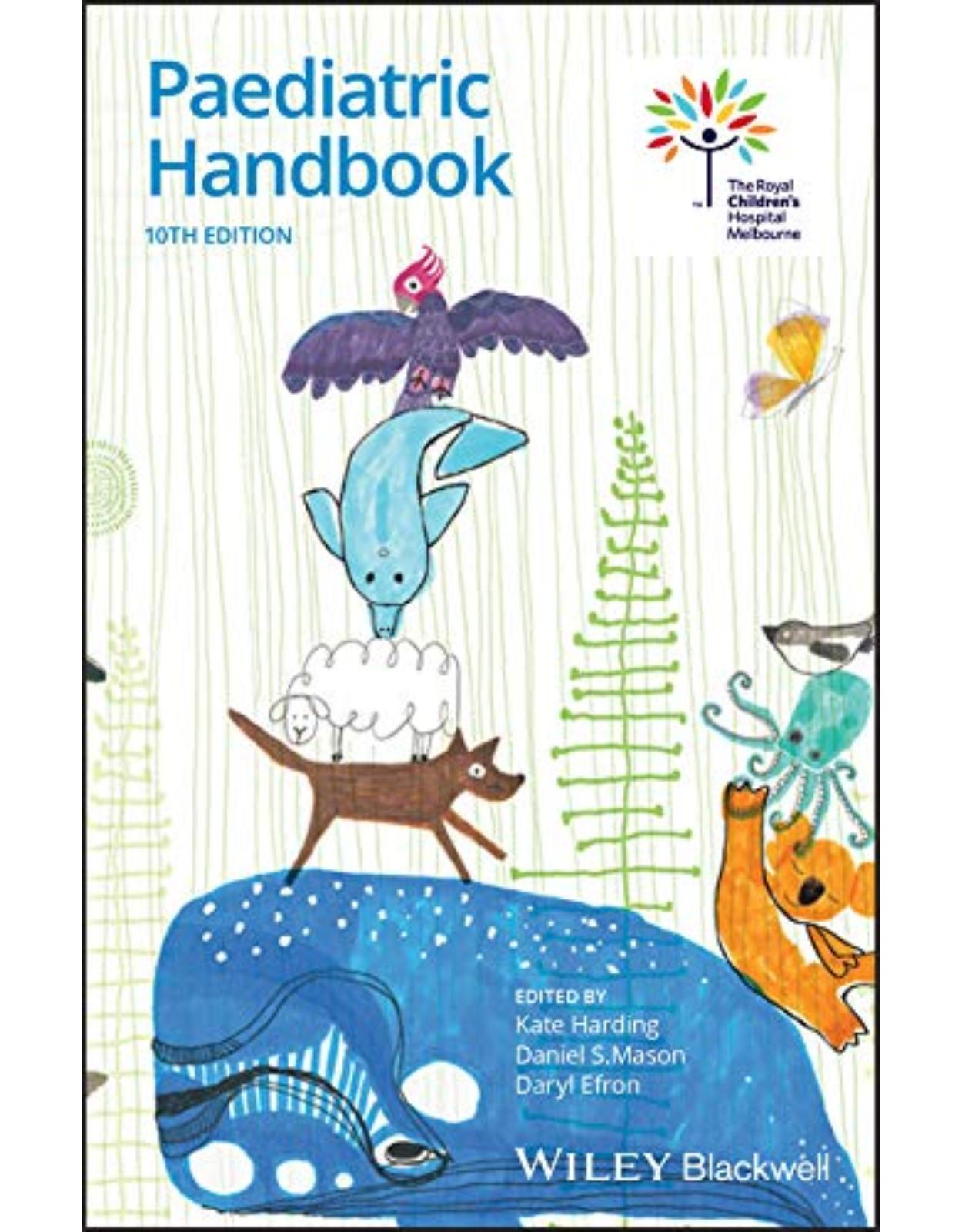
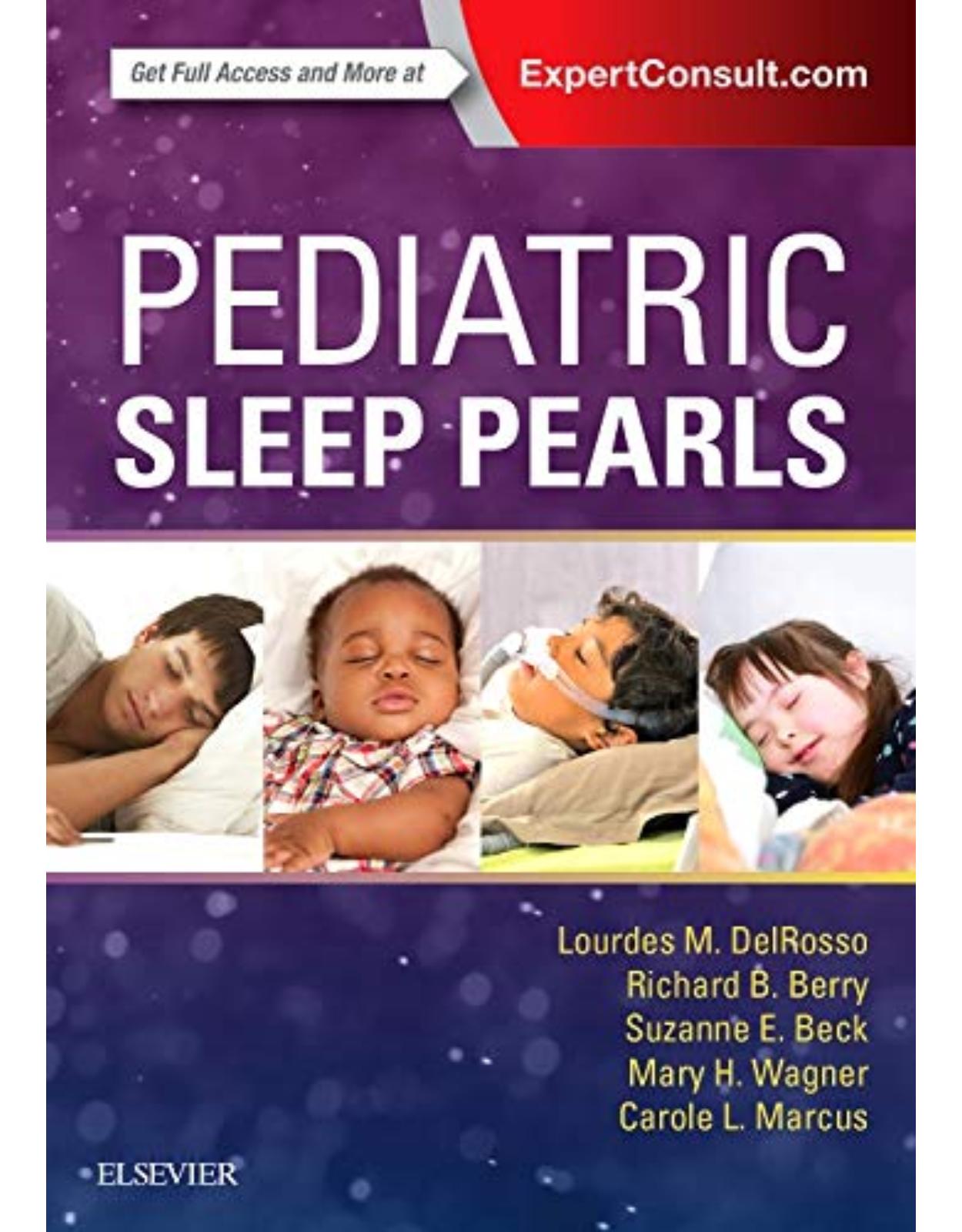
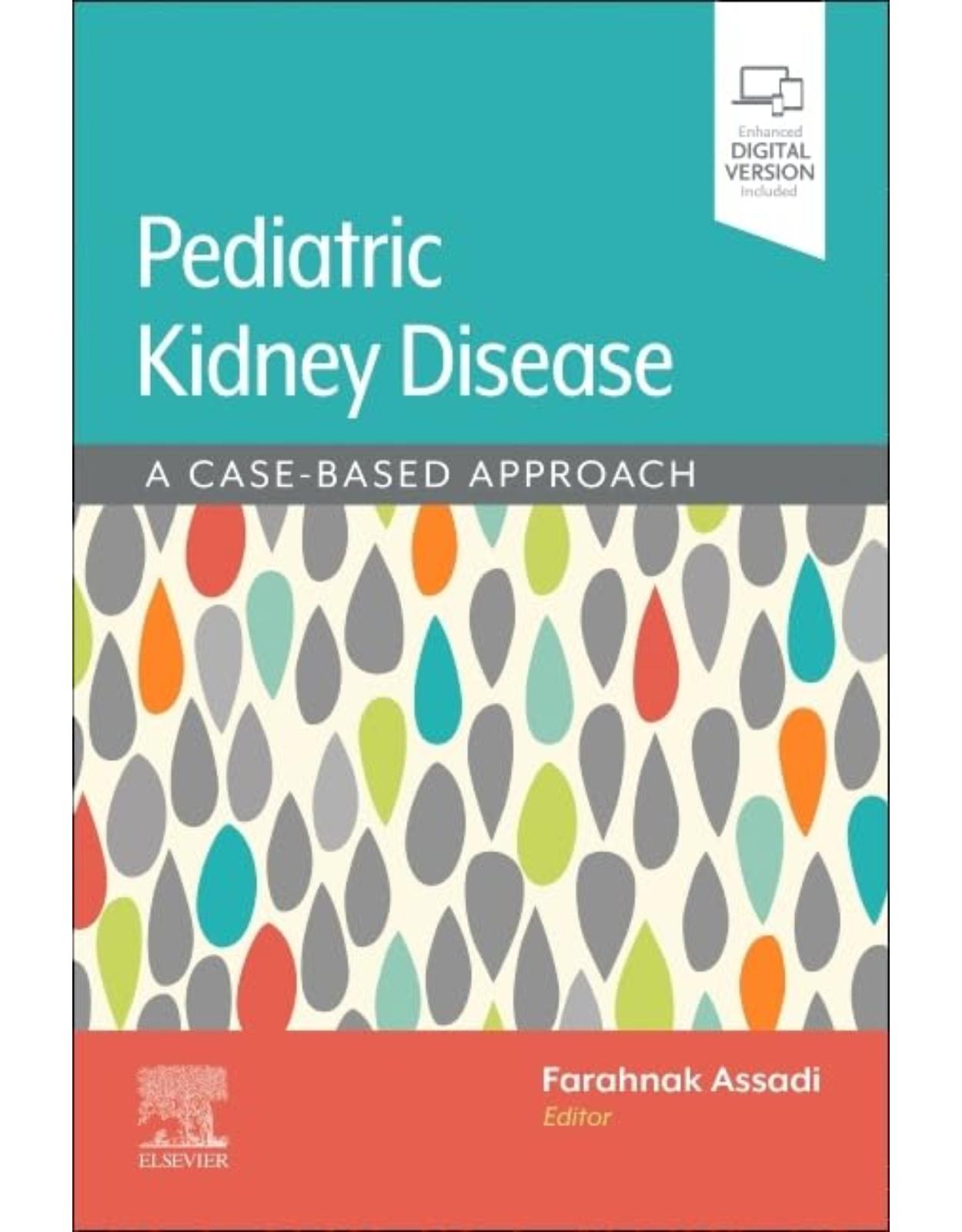
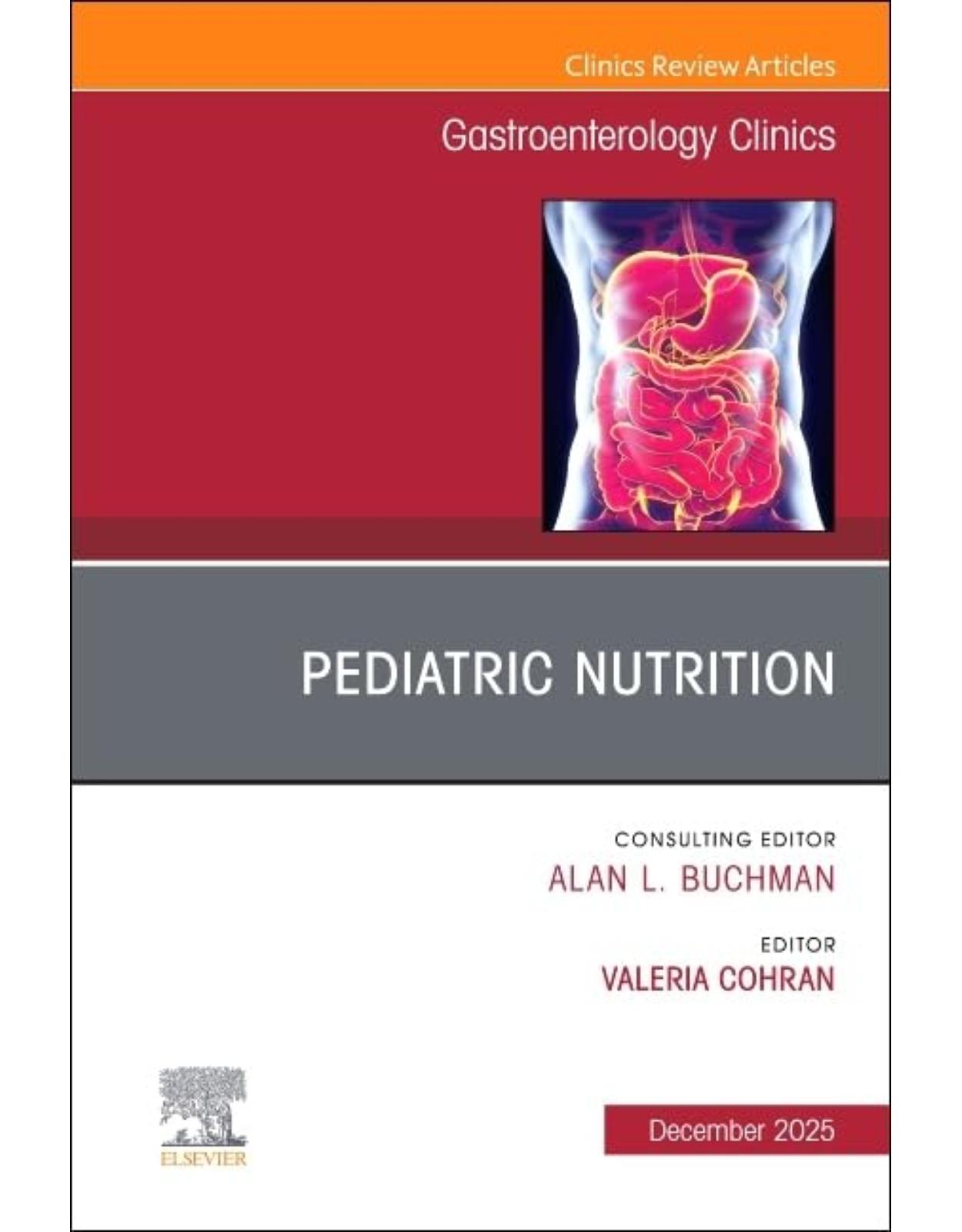
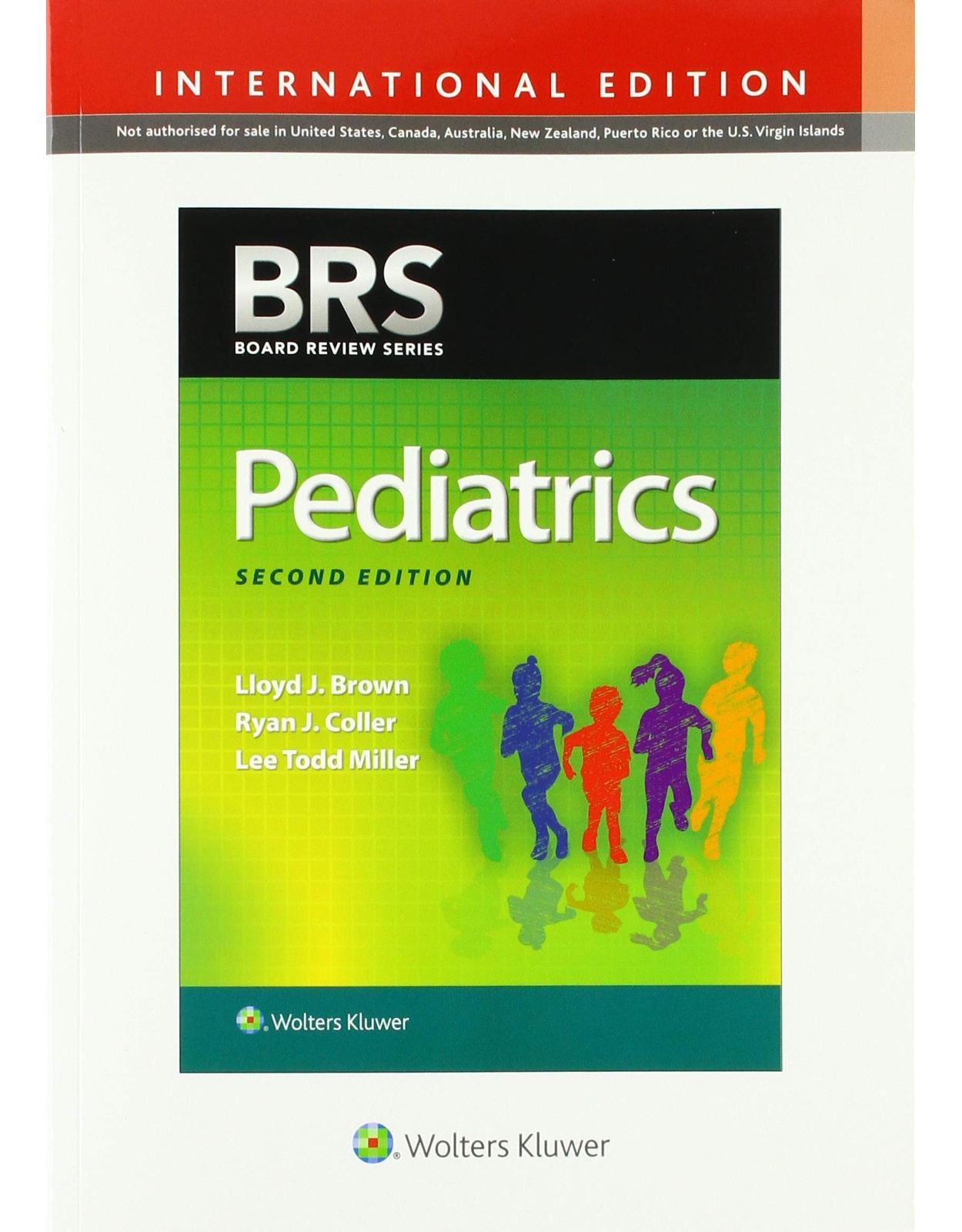
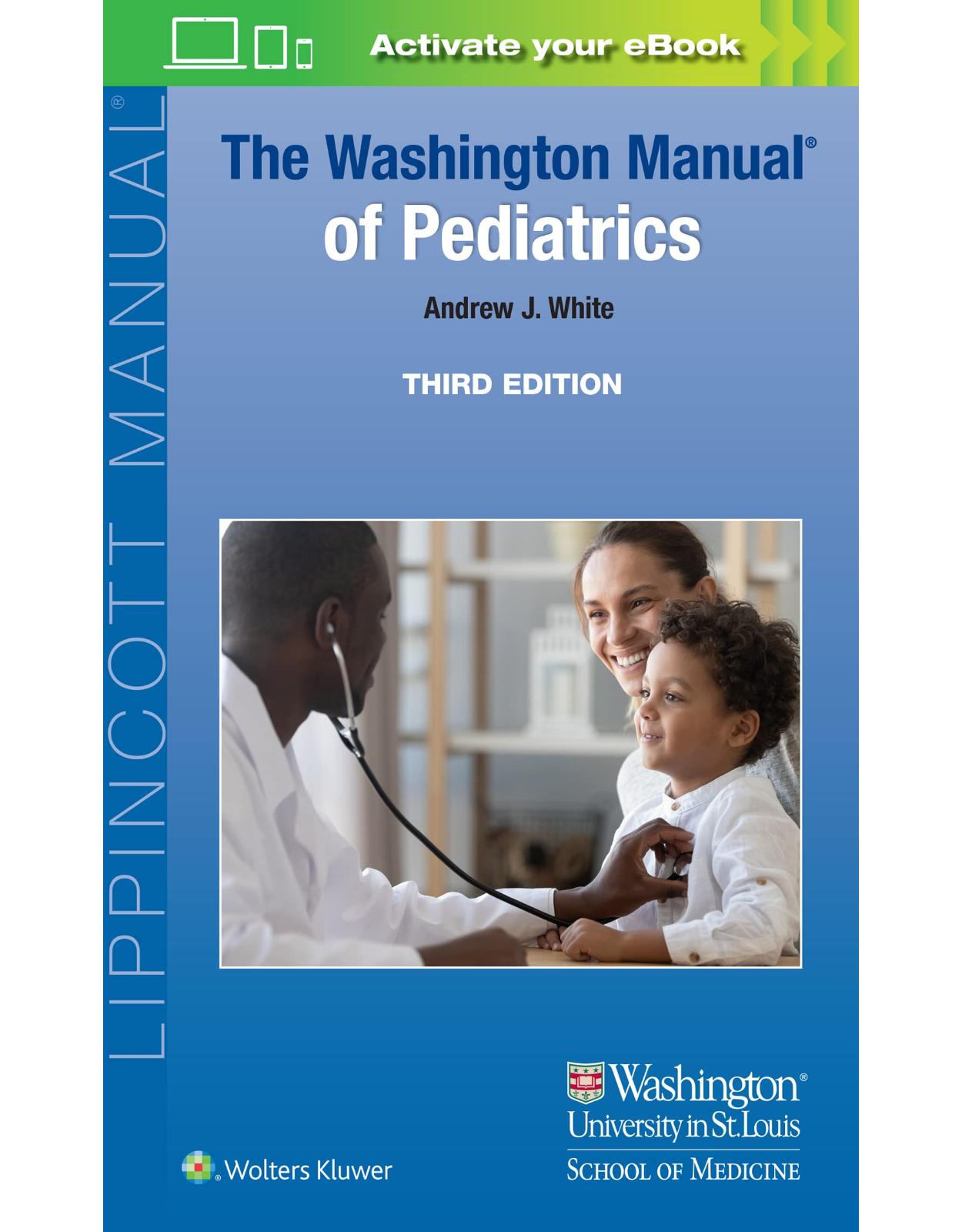
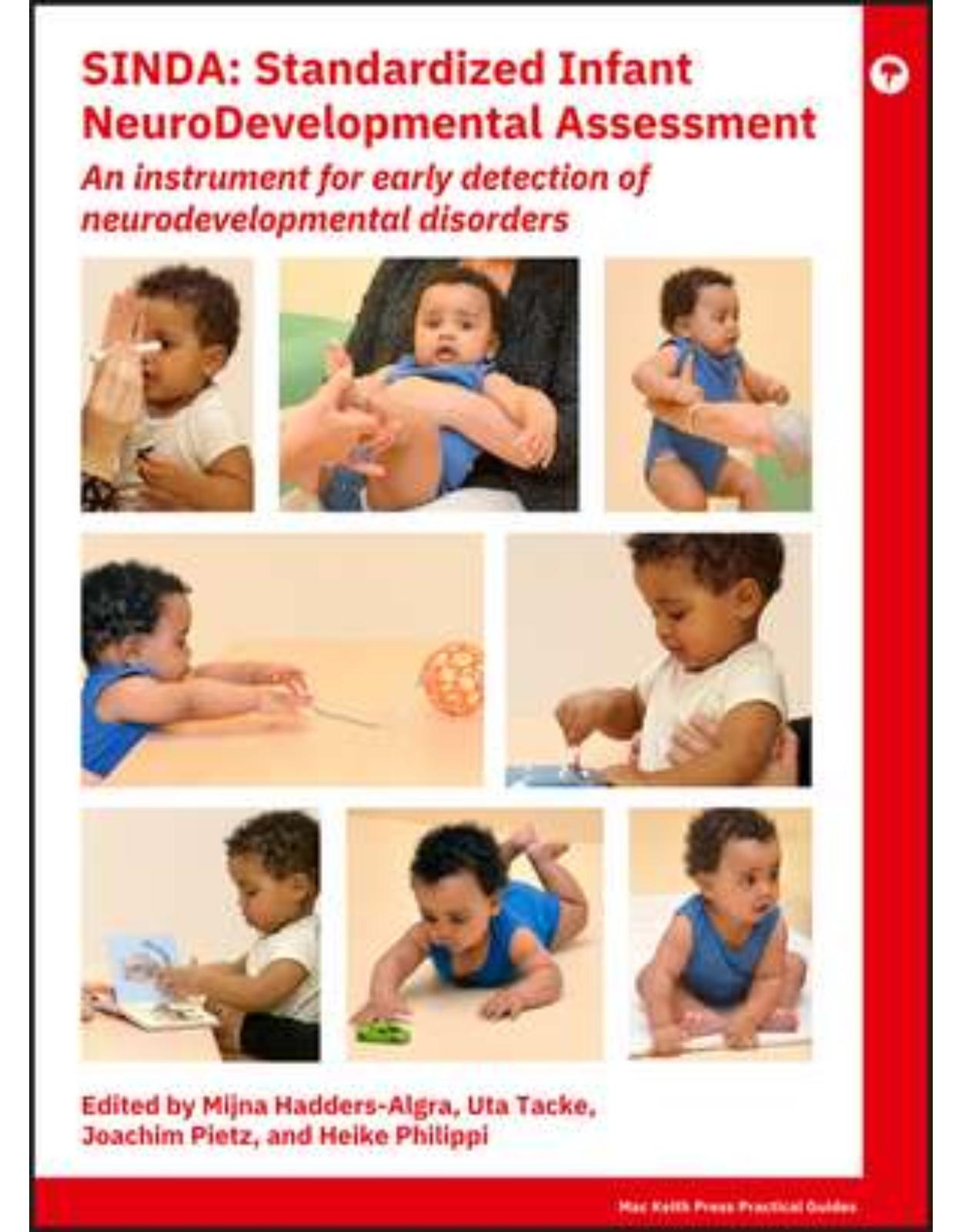
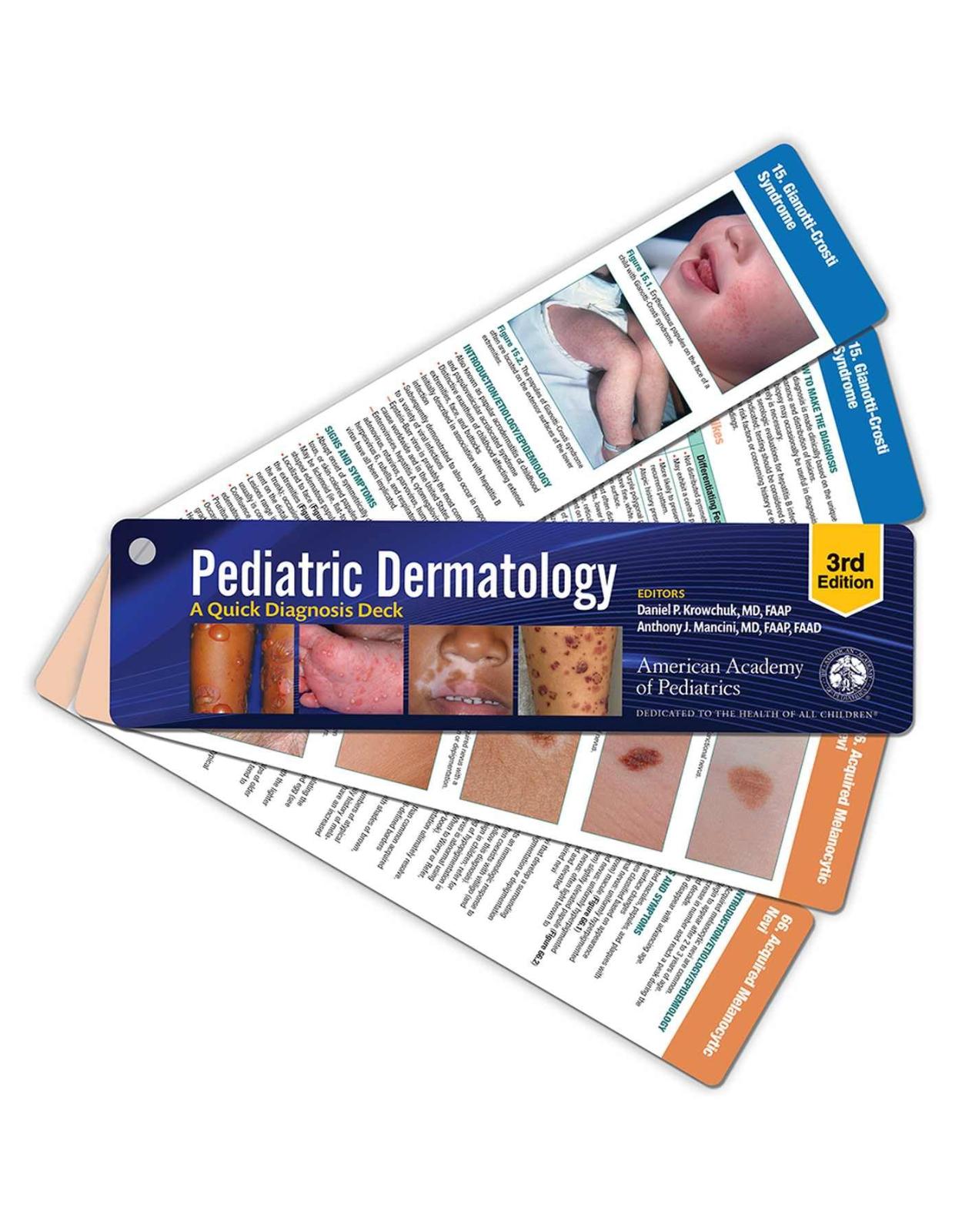
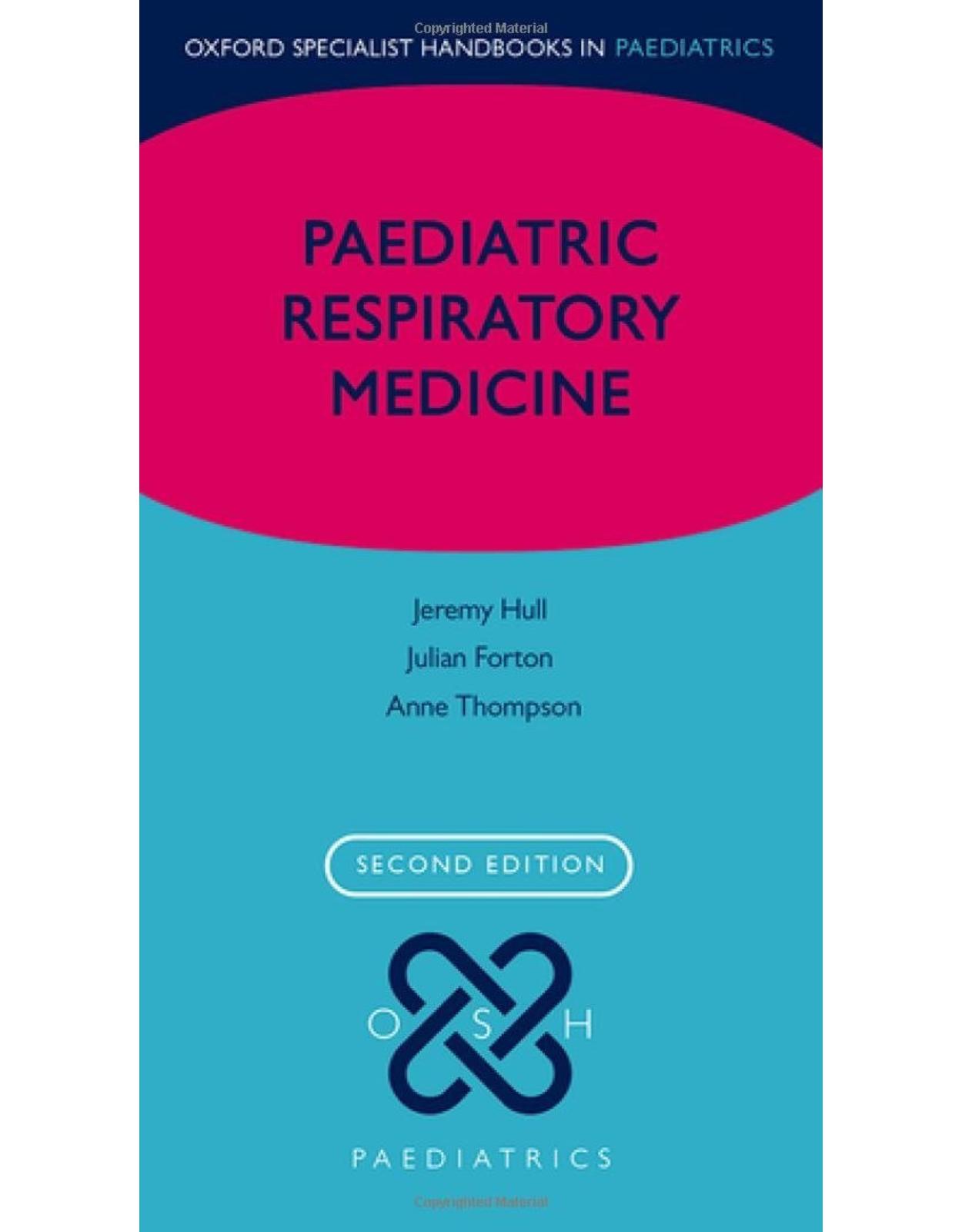
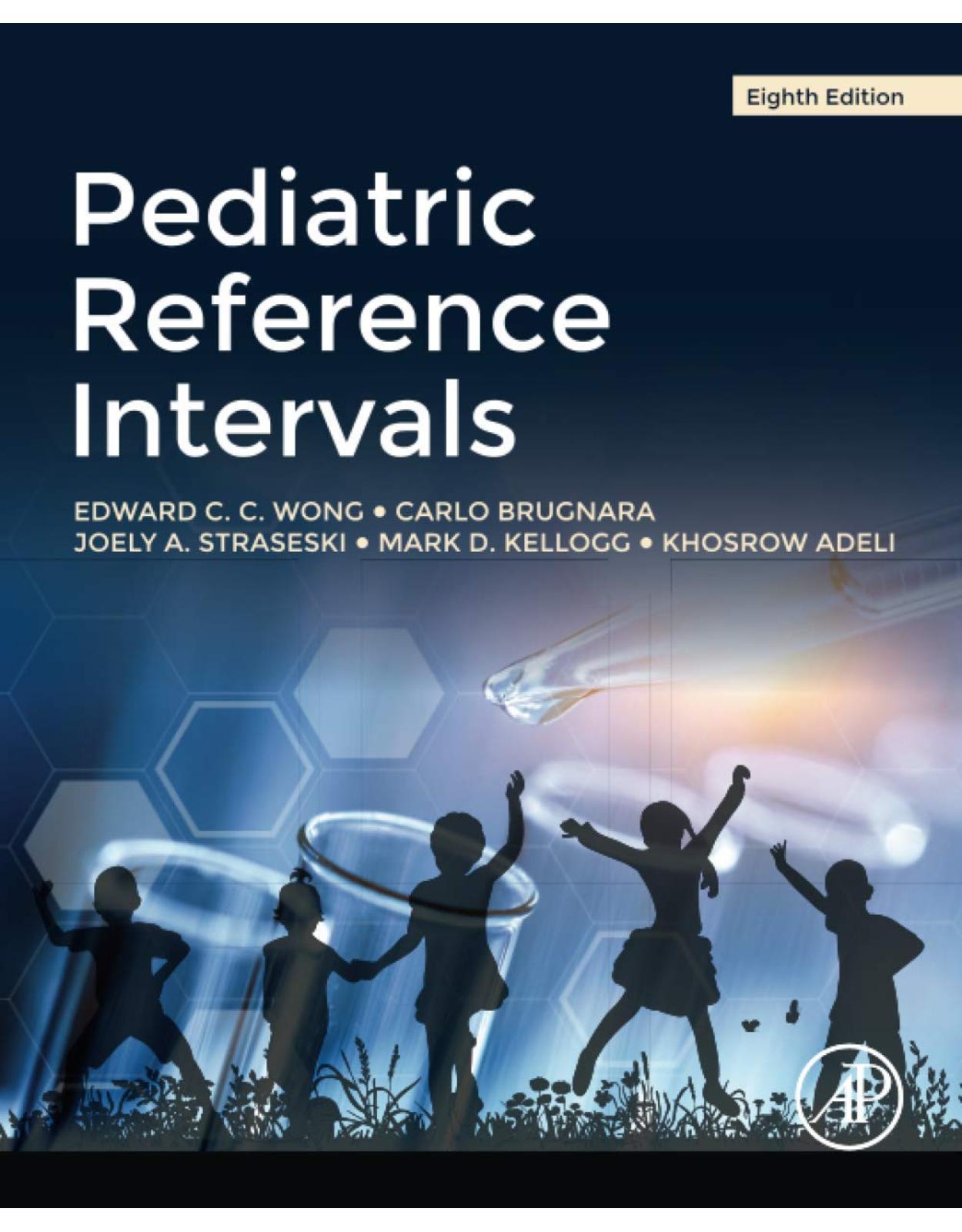
Clientii ebookshop.ro nu au adaugat inca opinii pentru acest produs. Fii primul care adauga o parere, folosind formularul de mai jos.